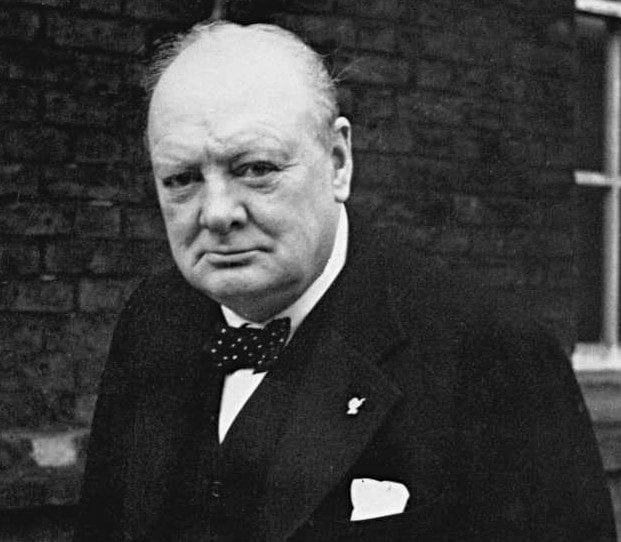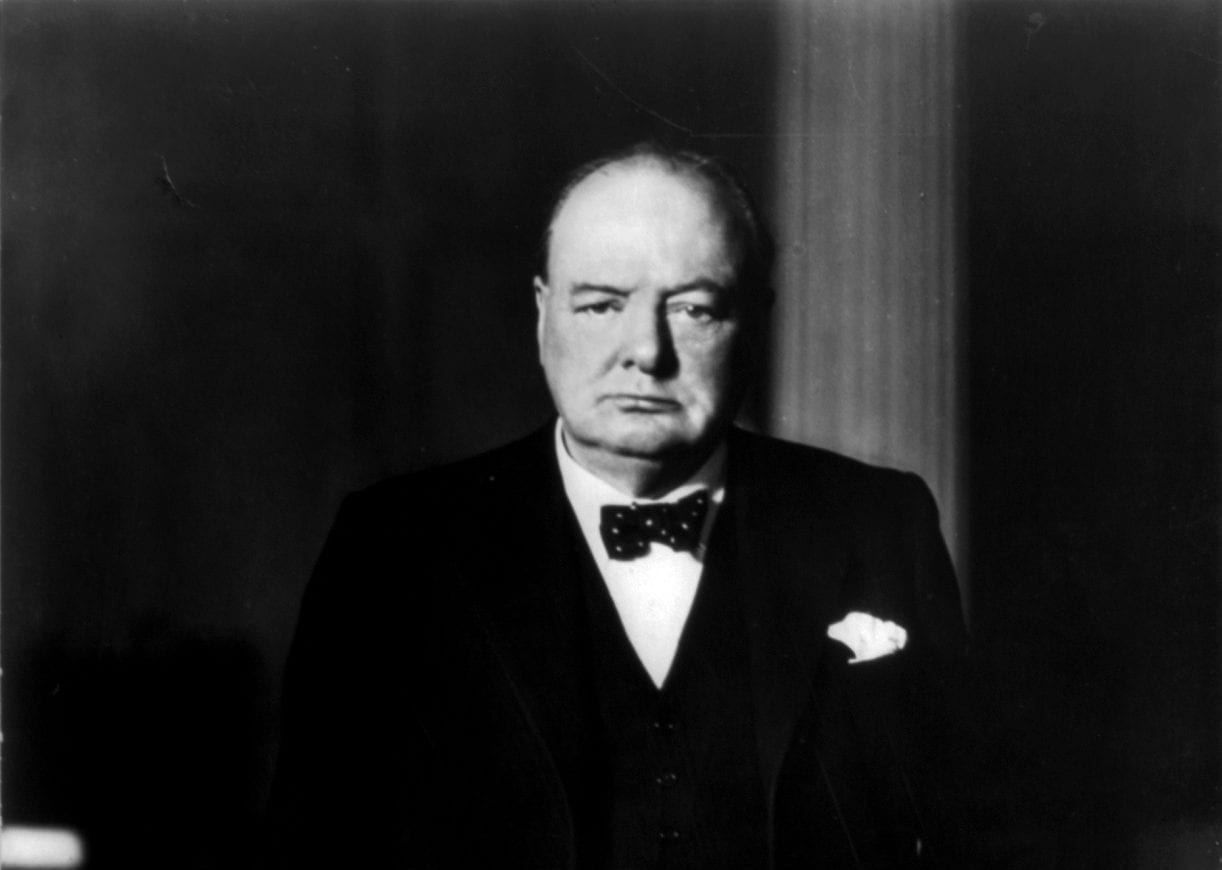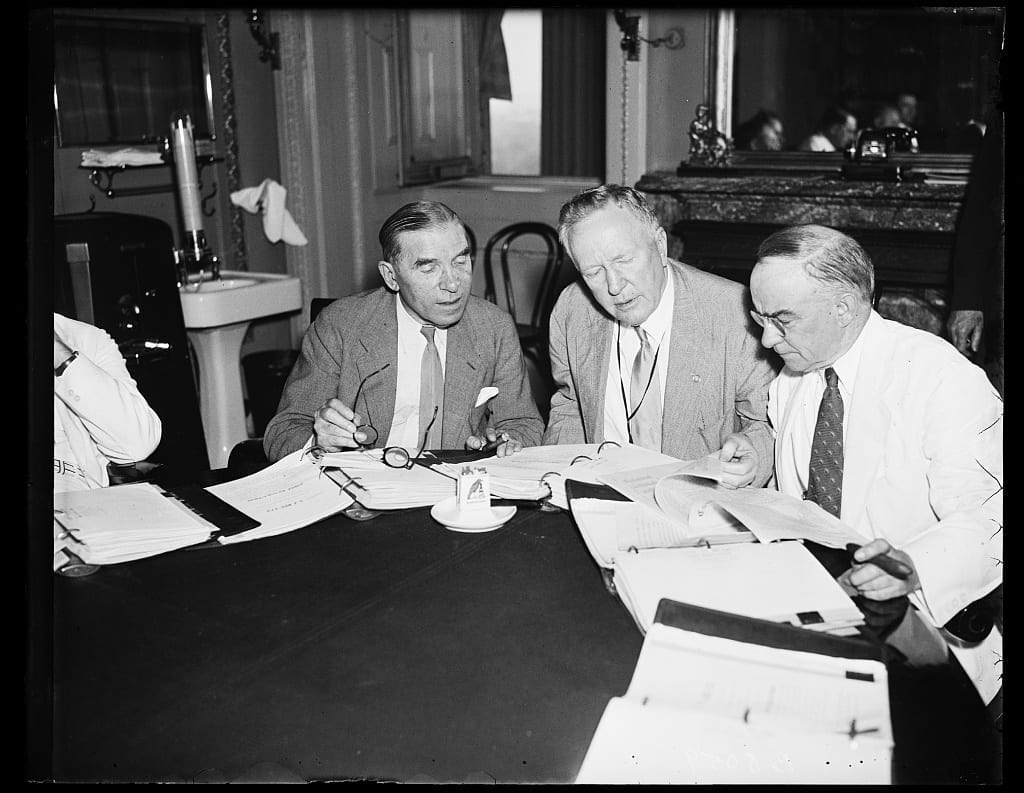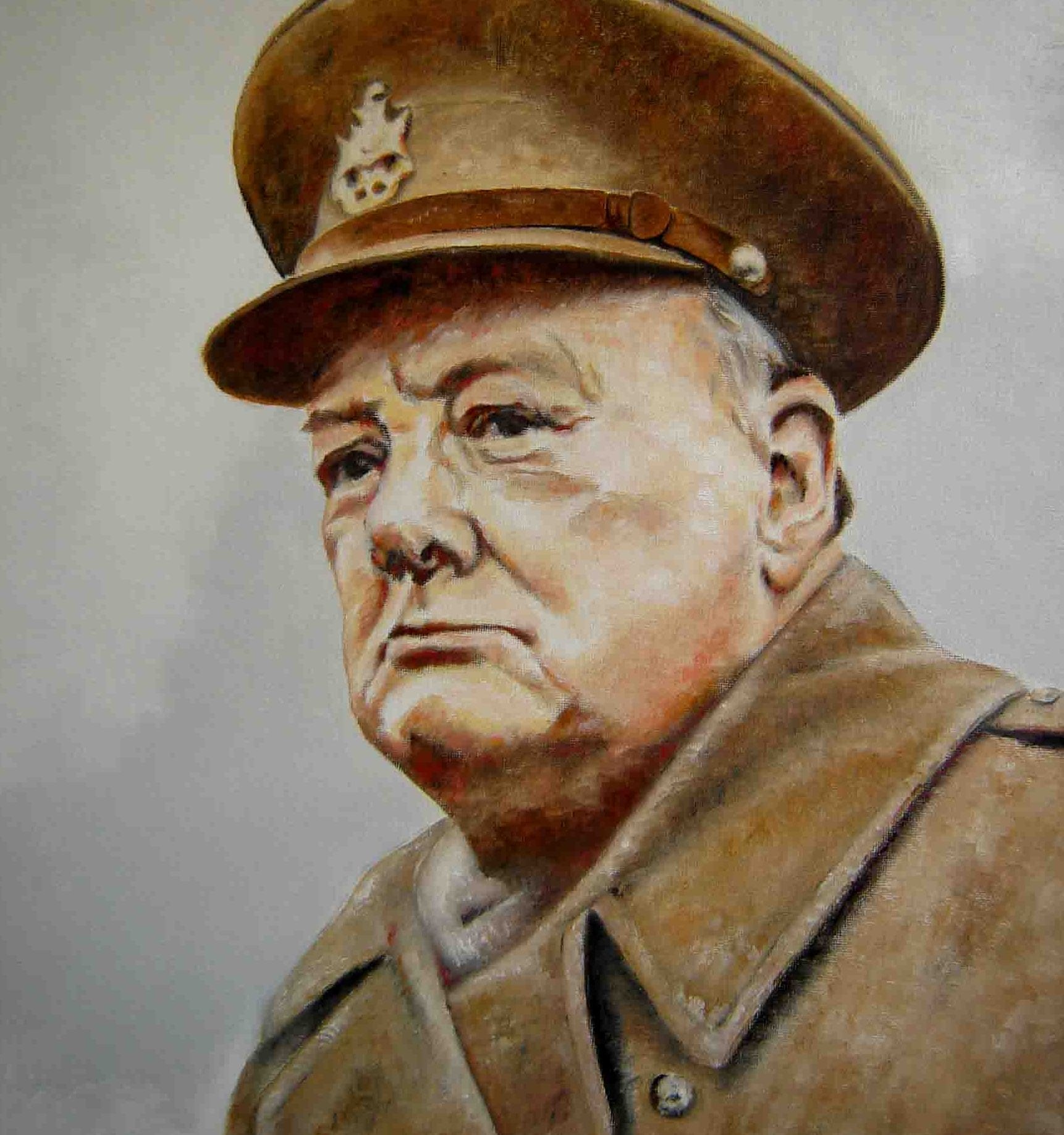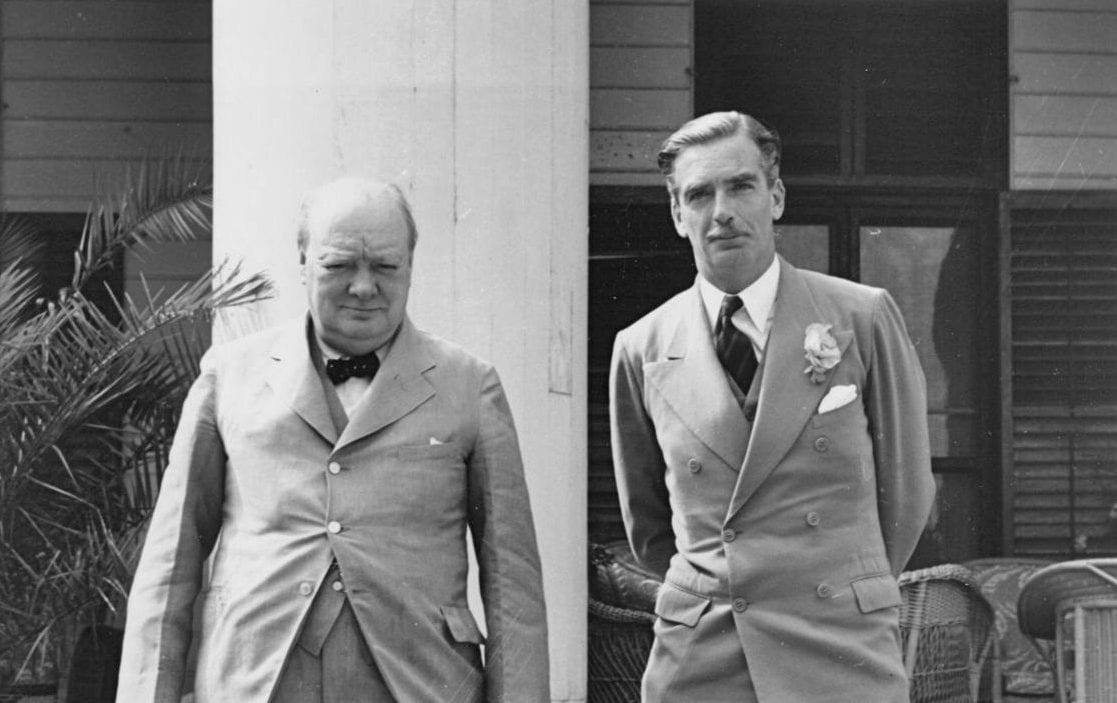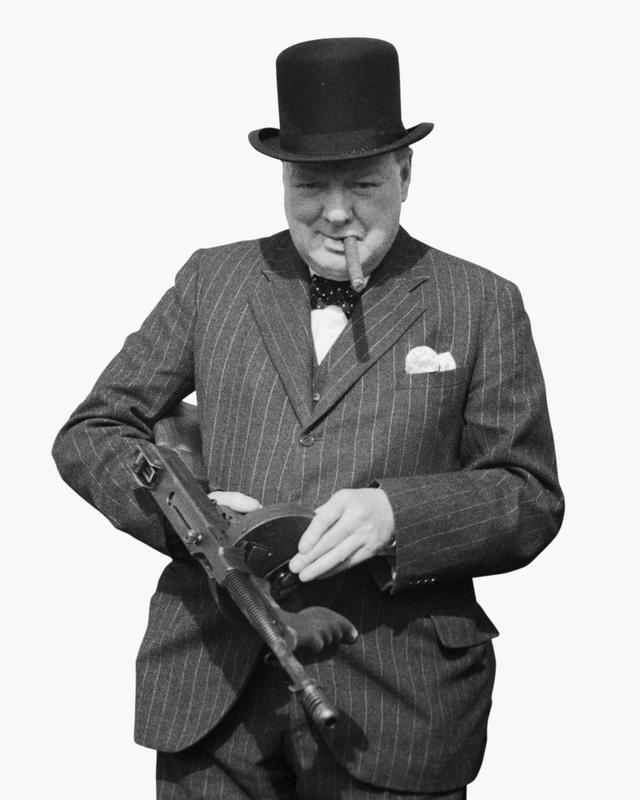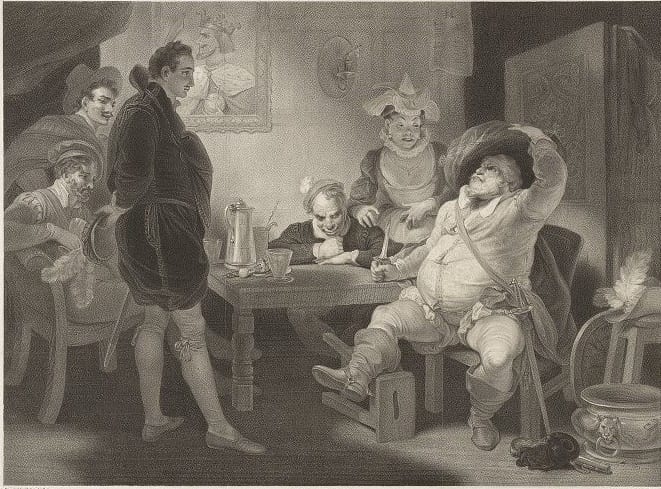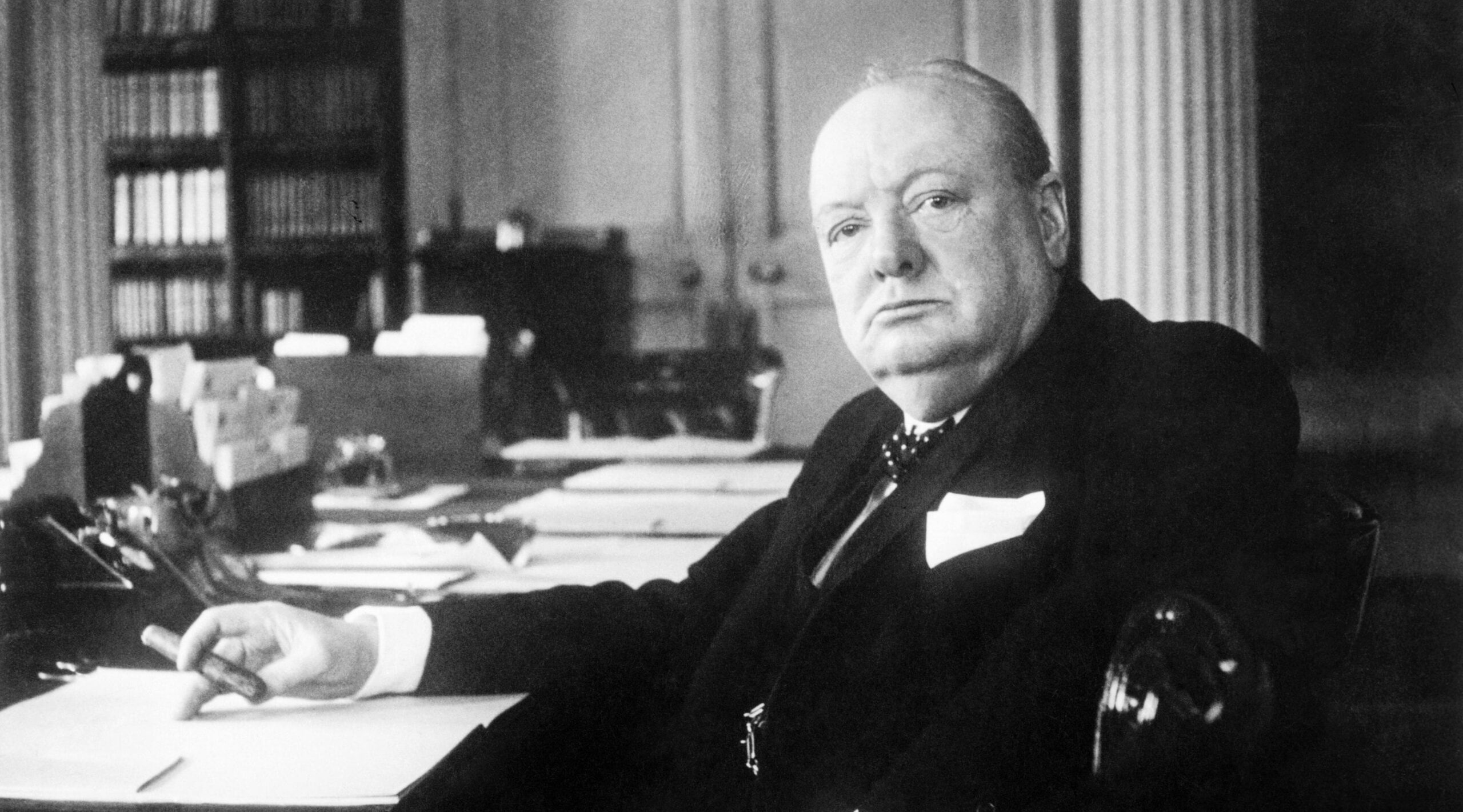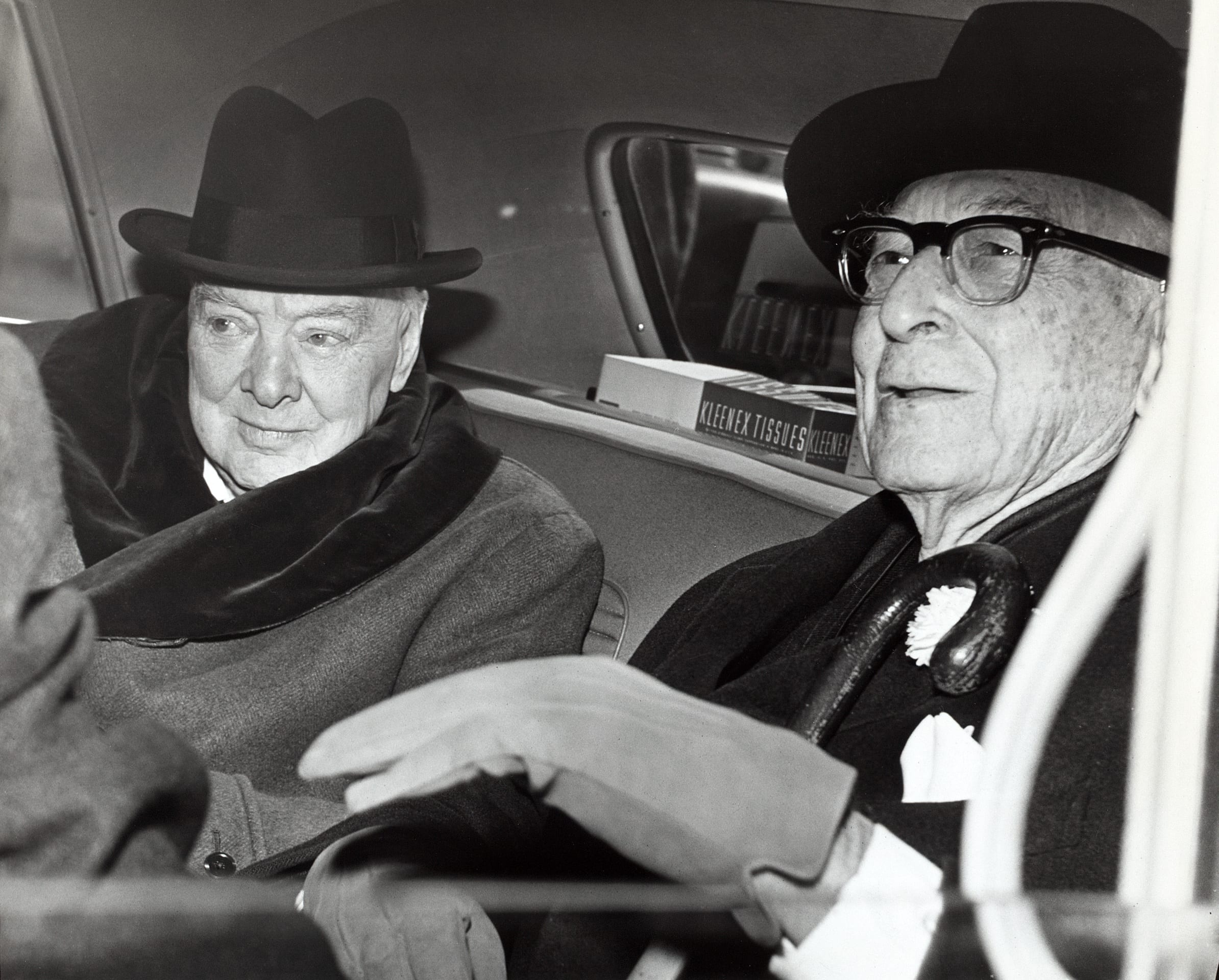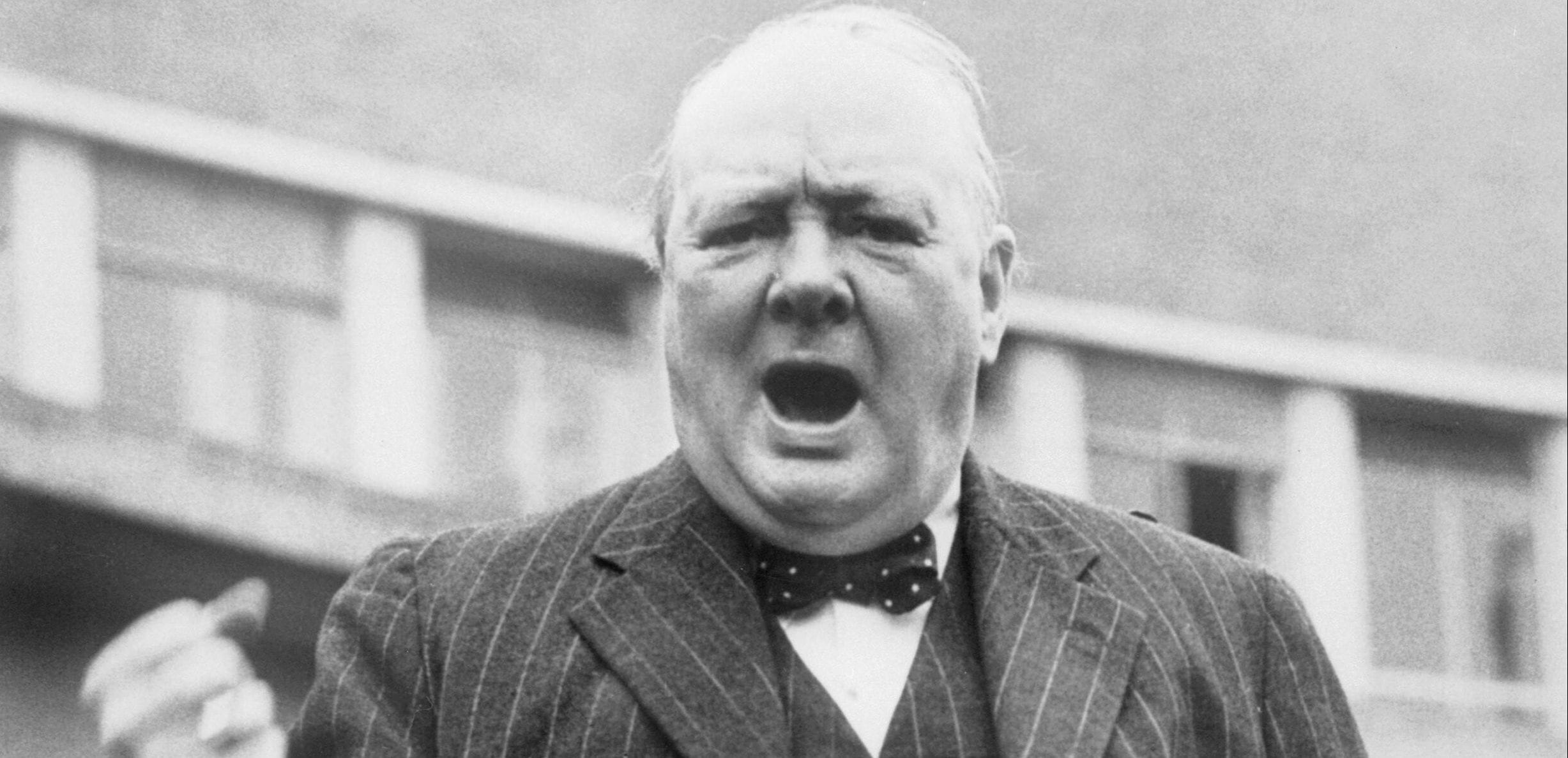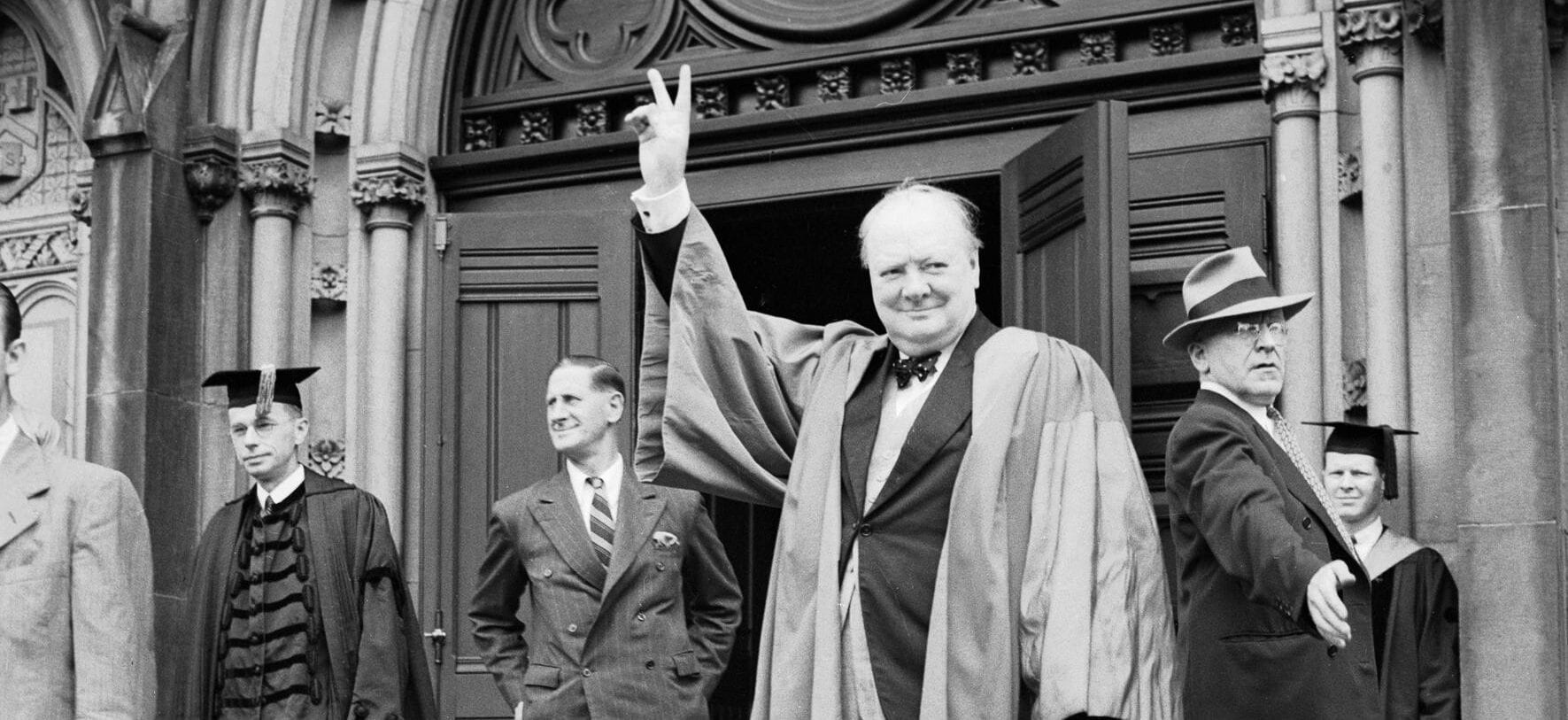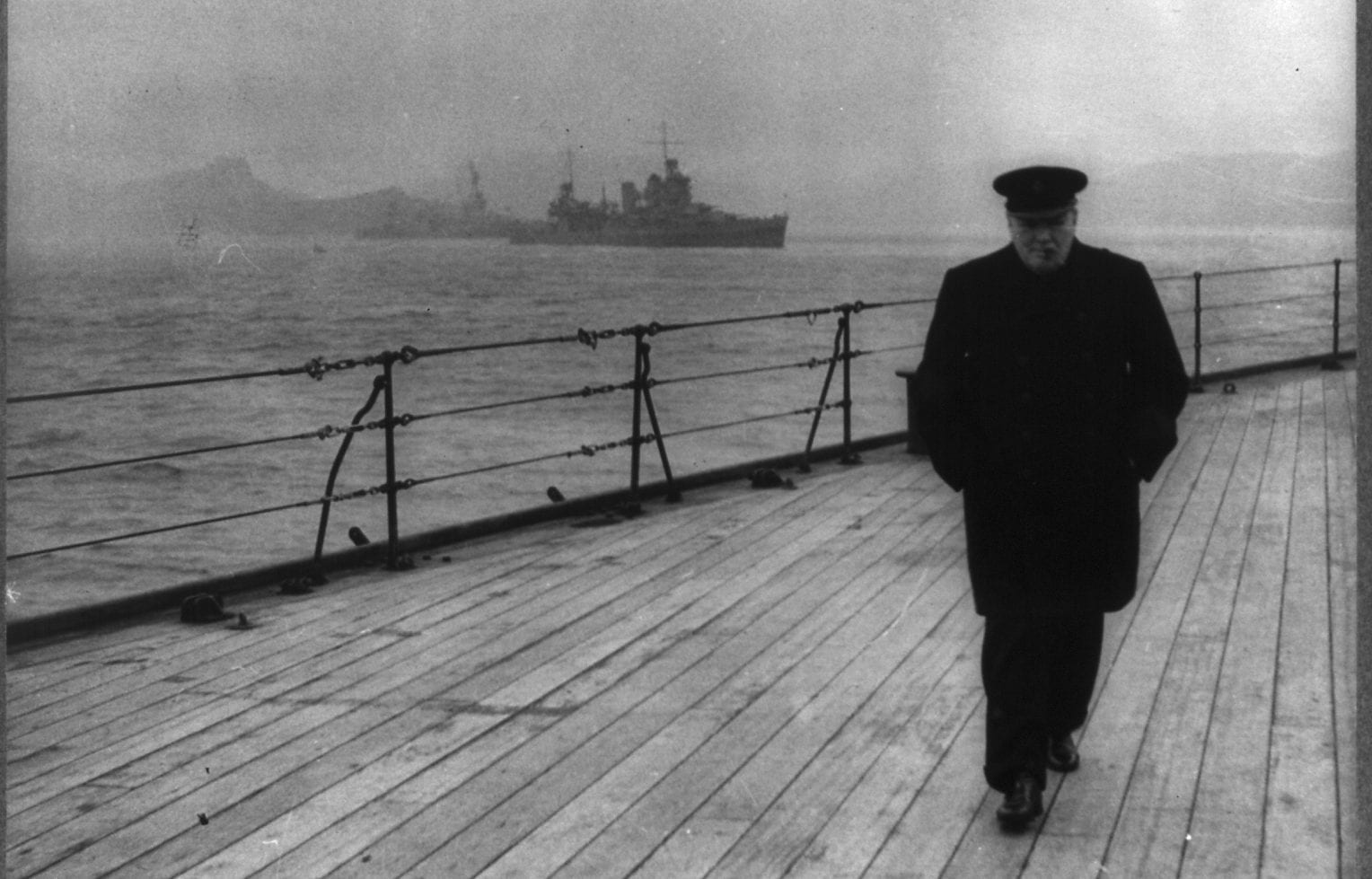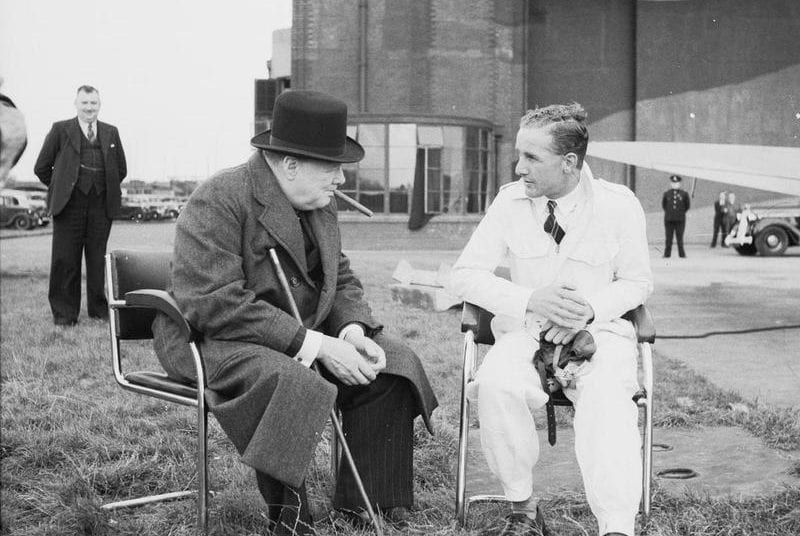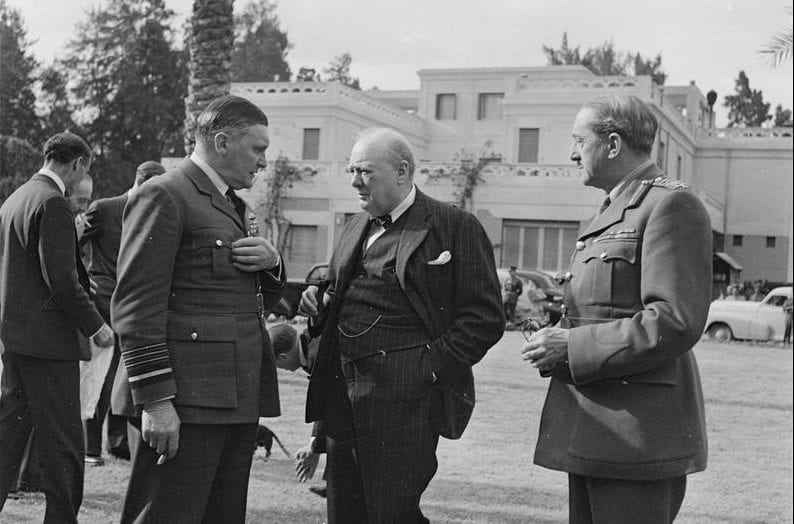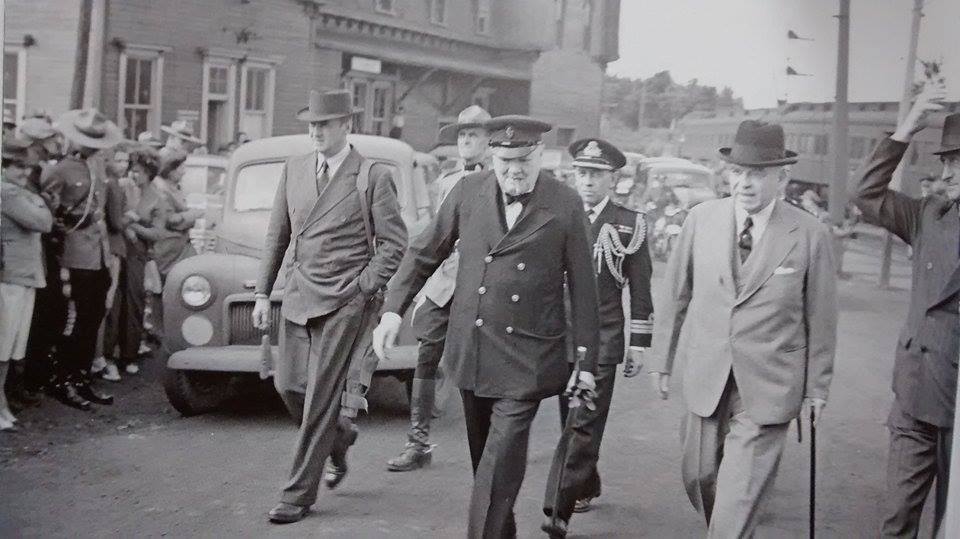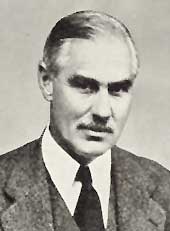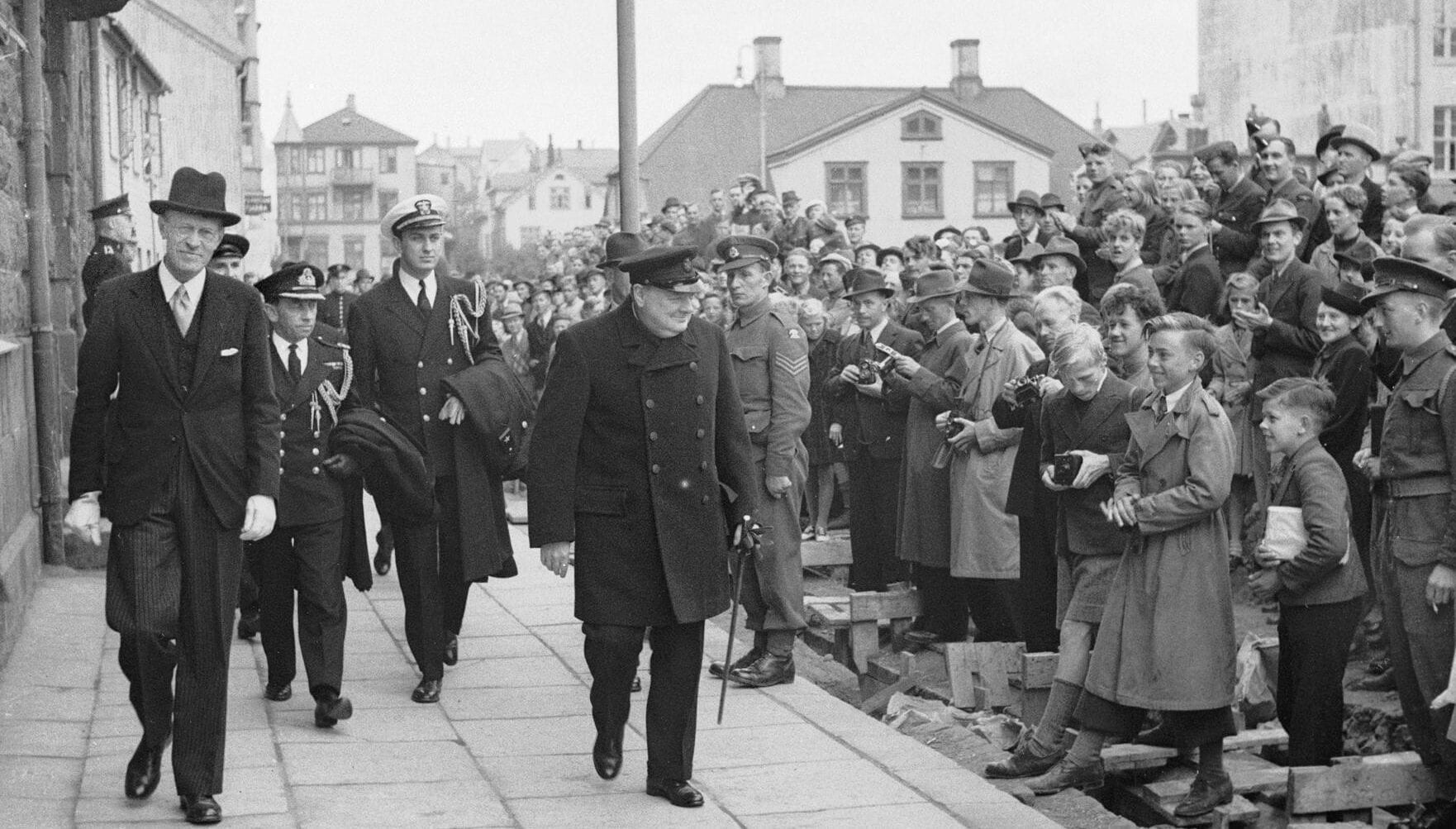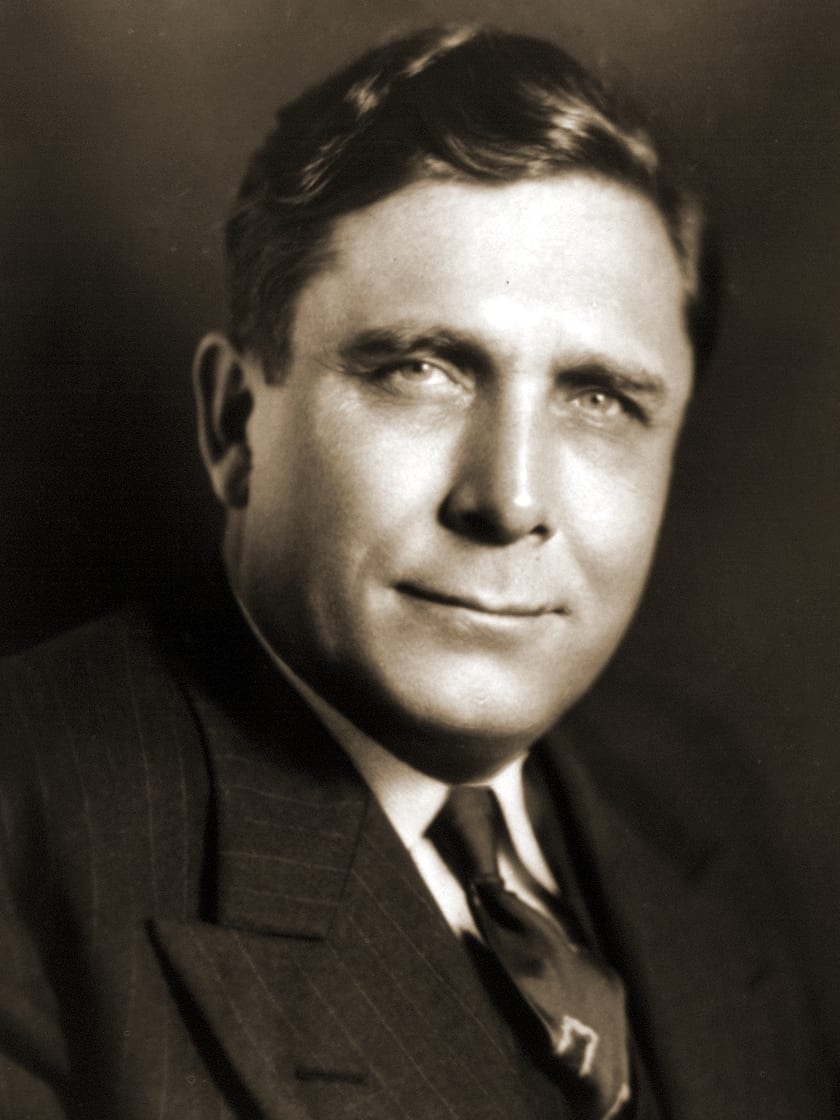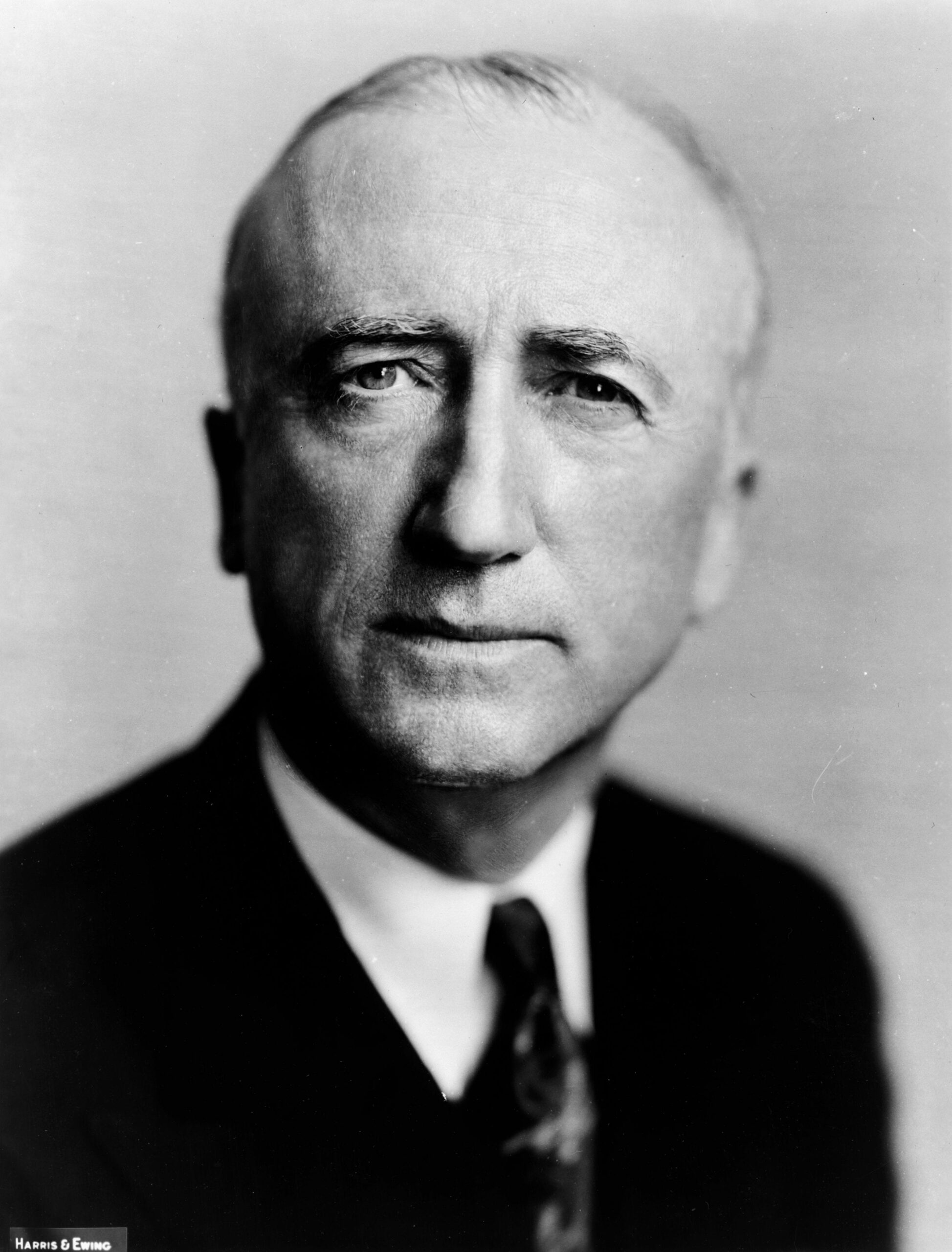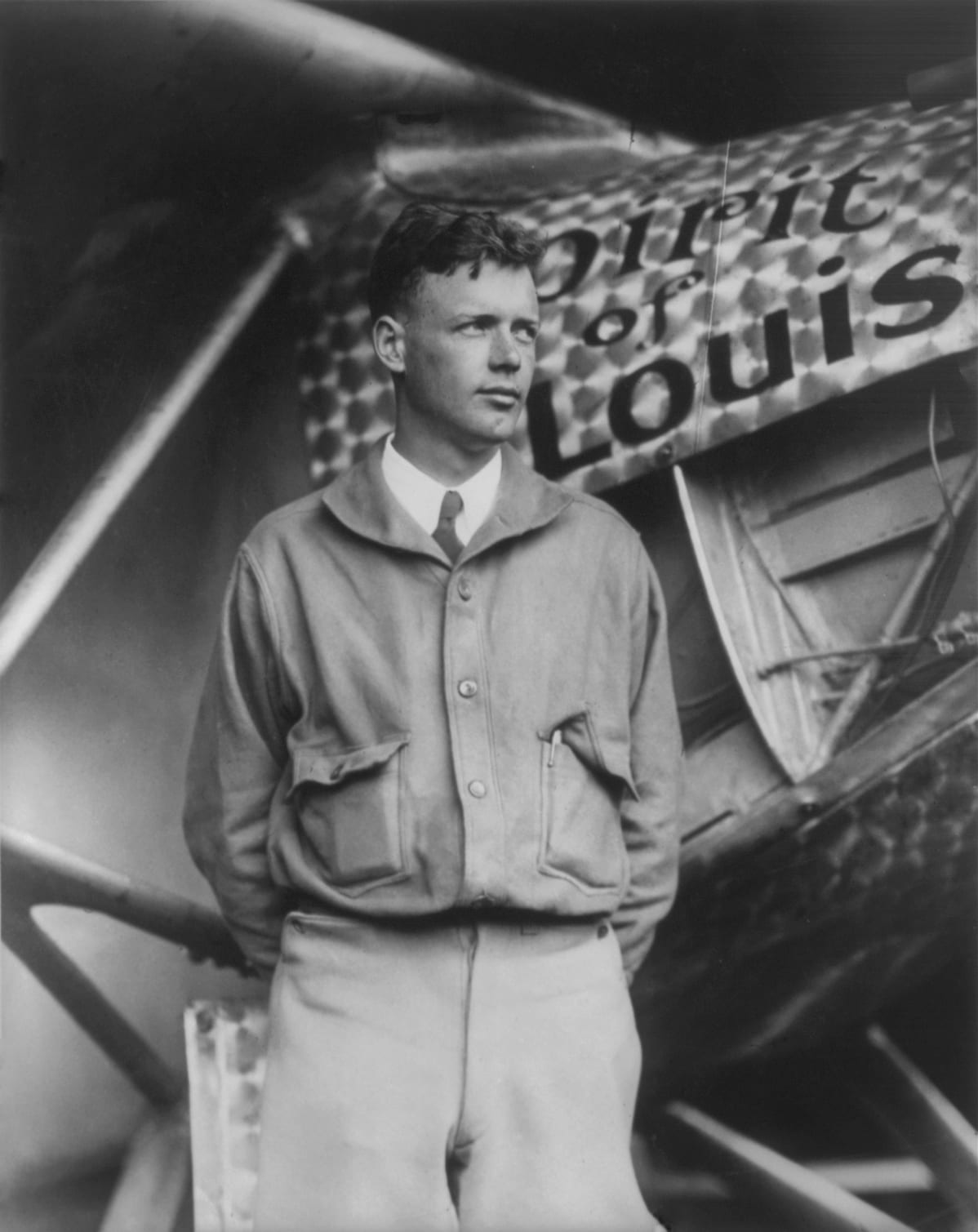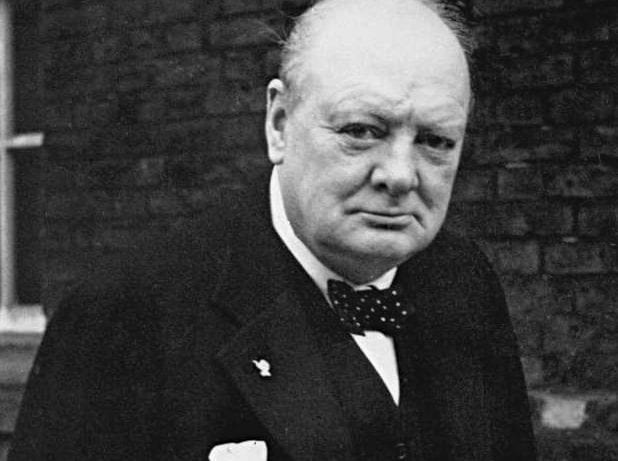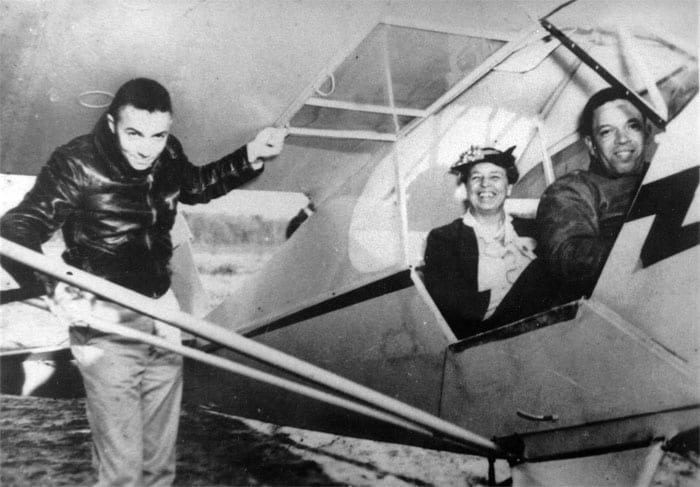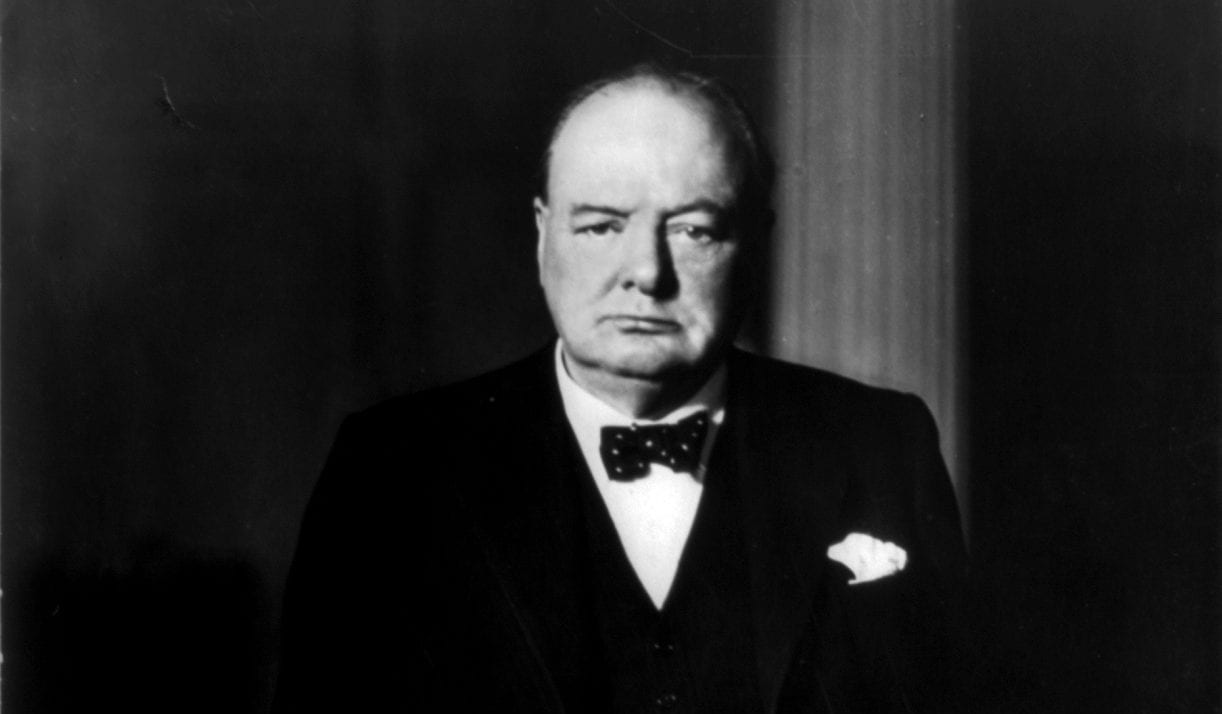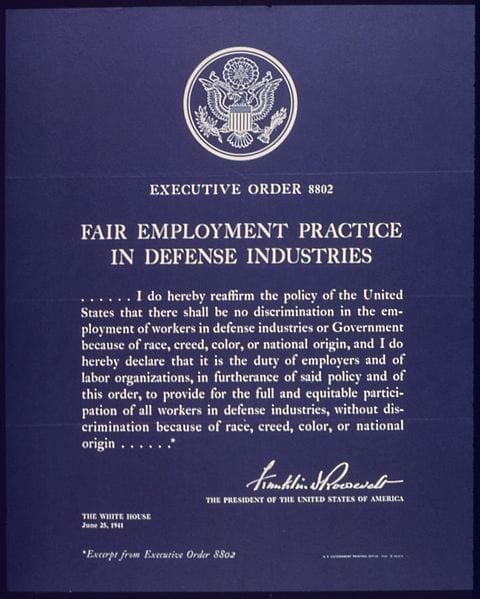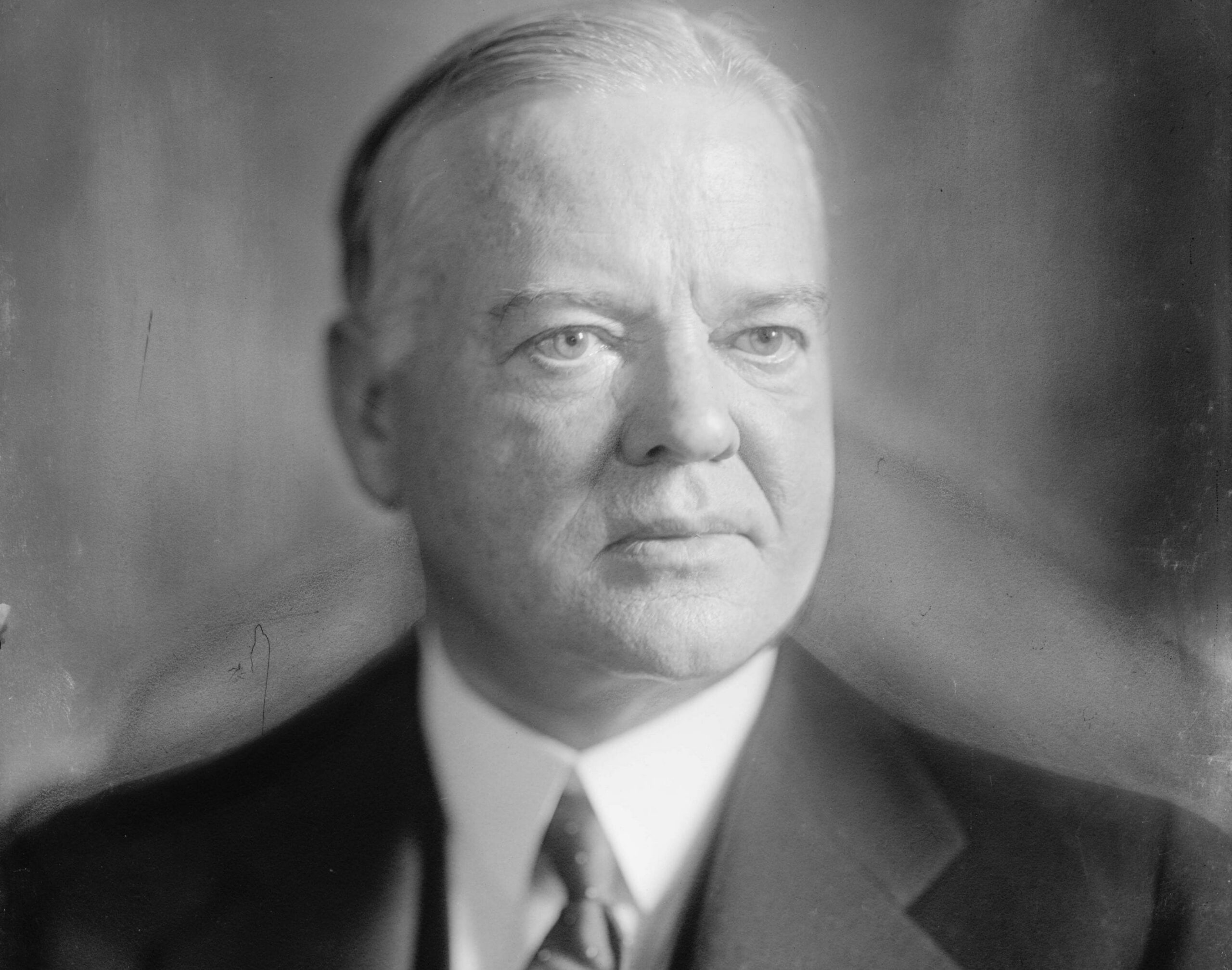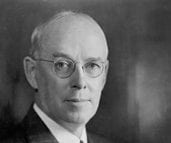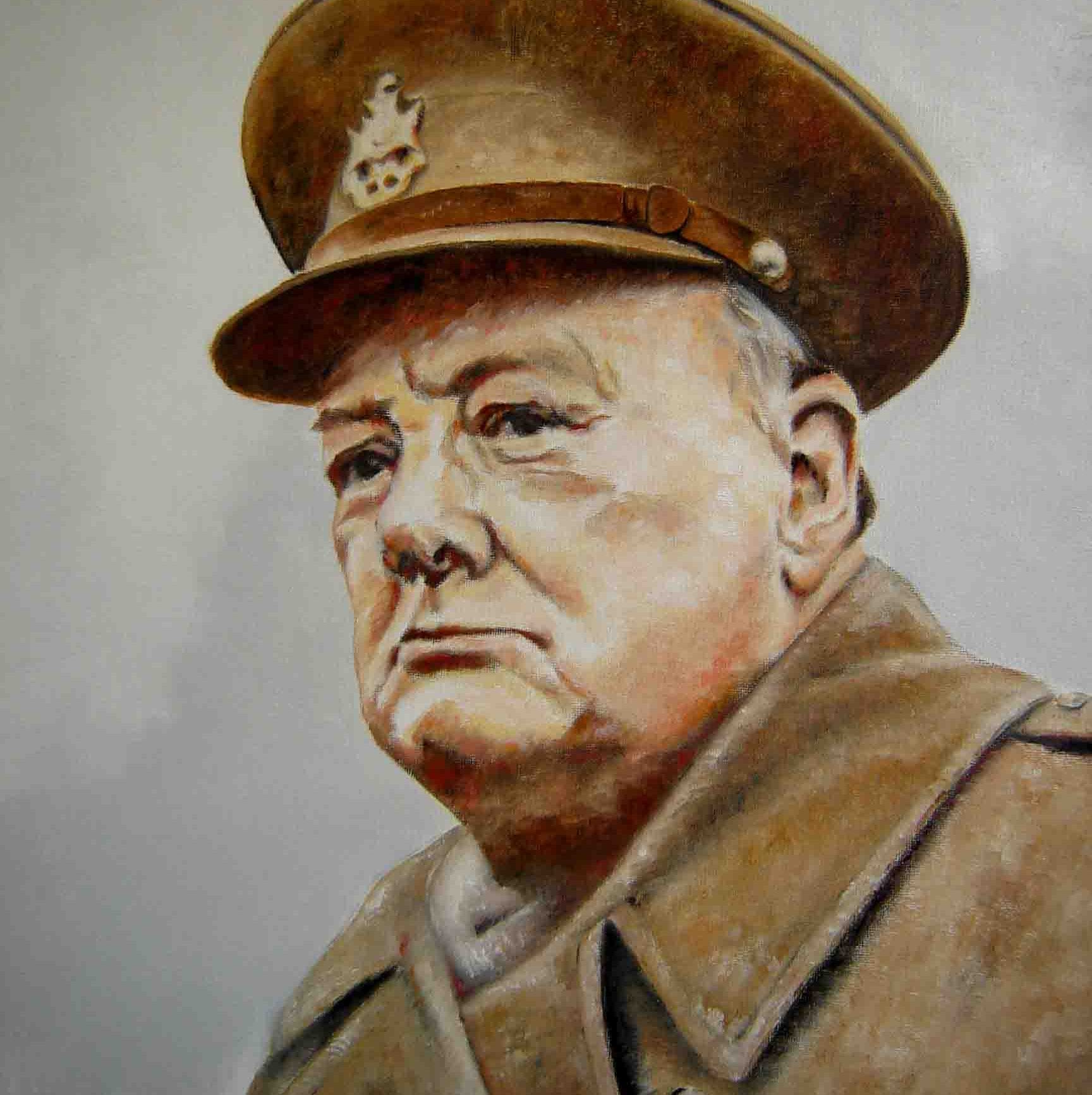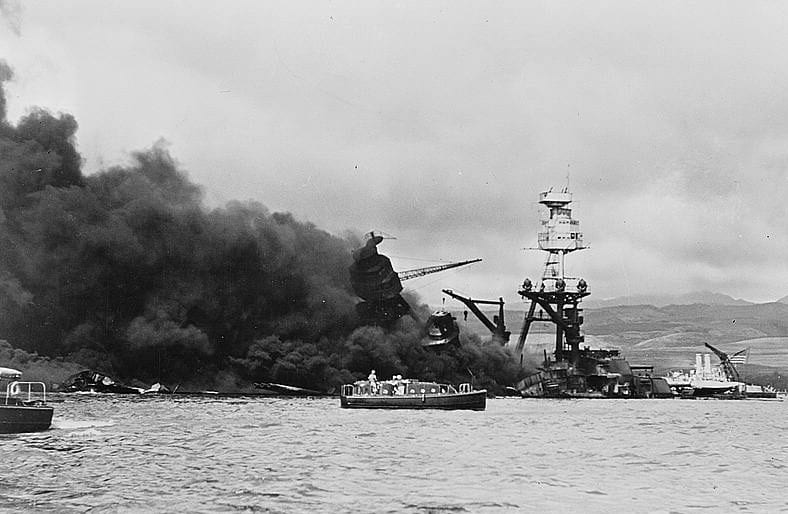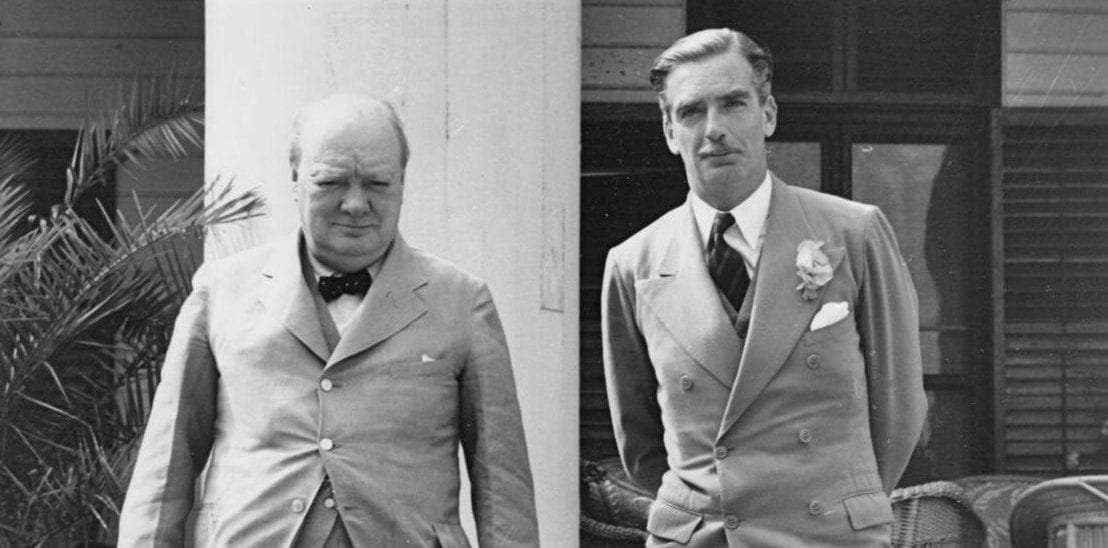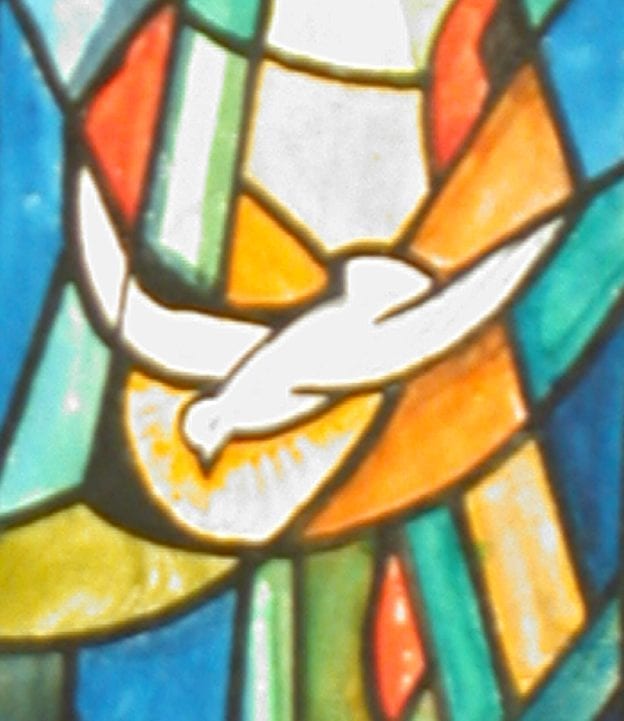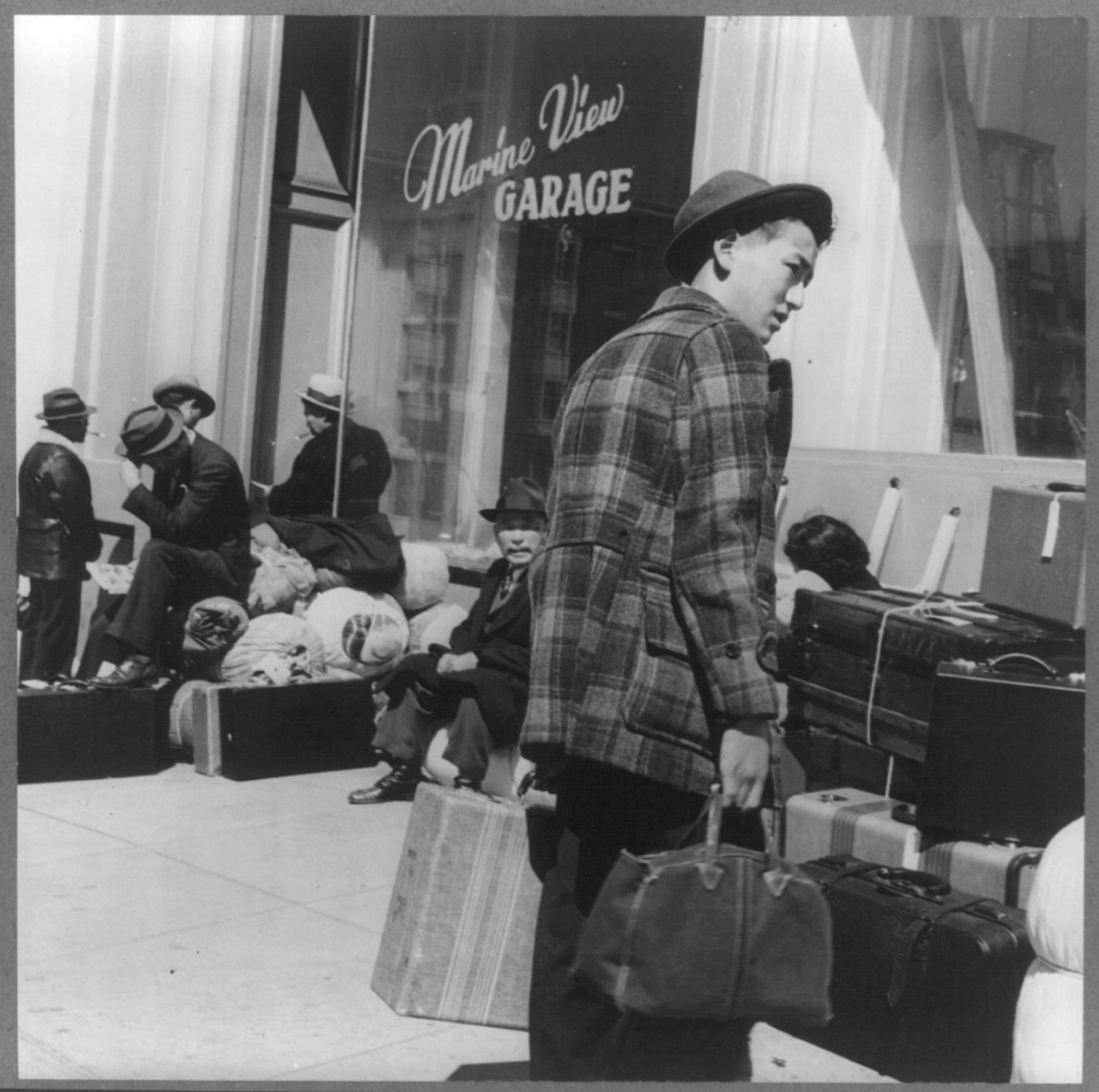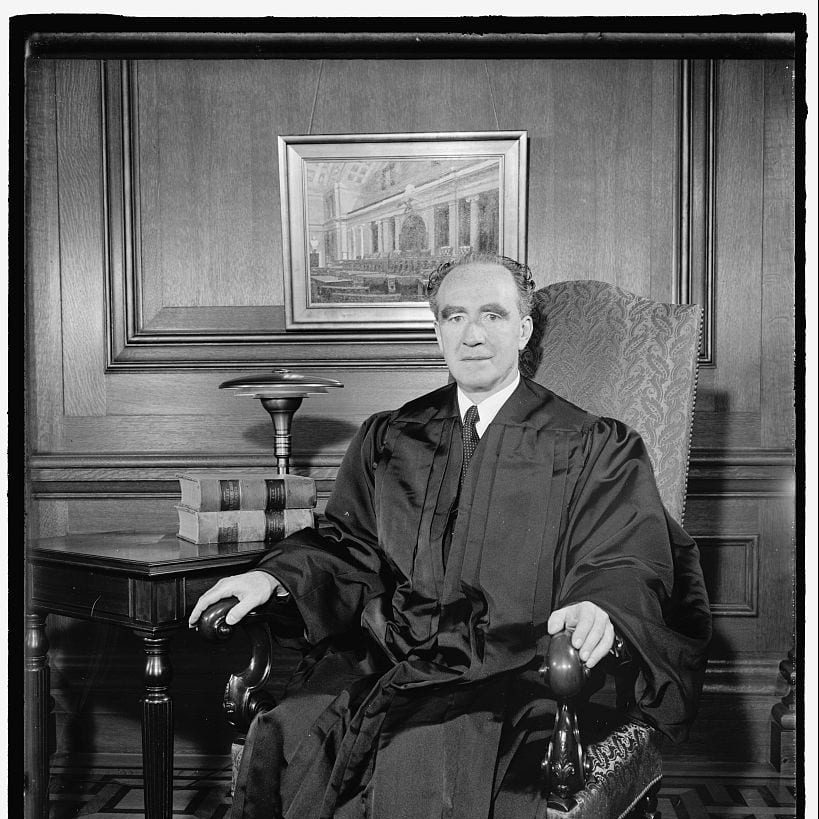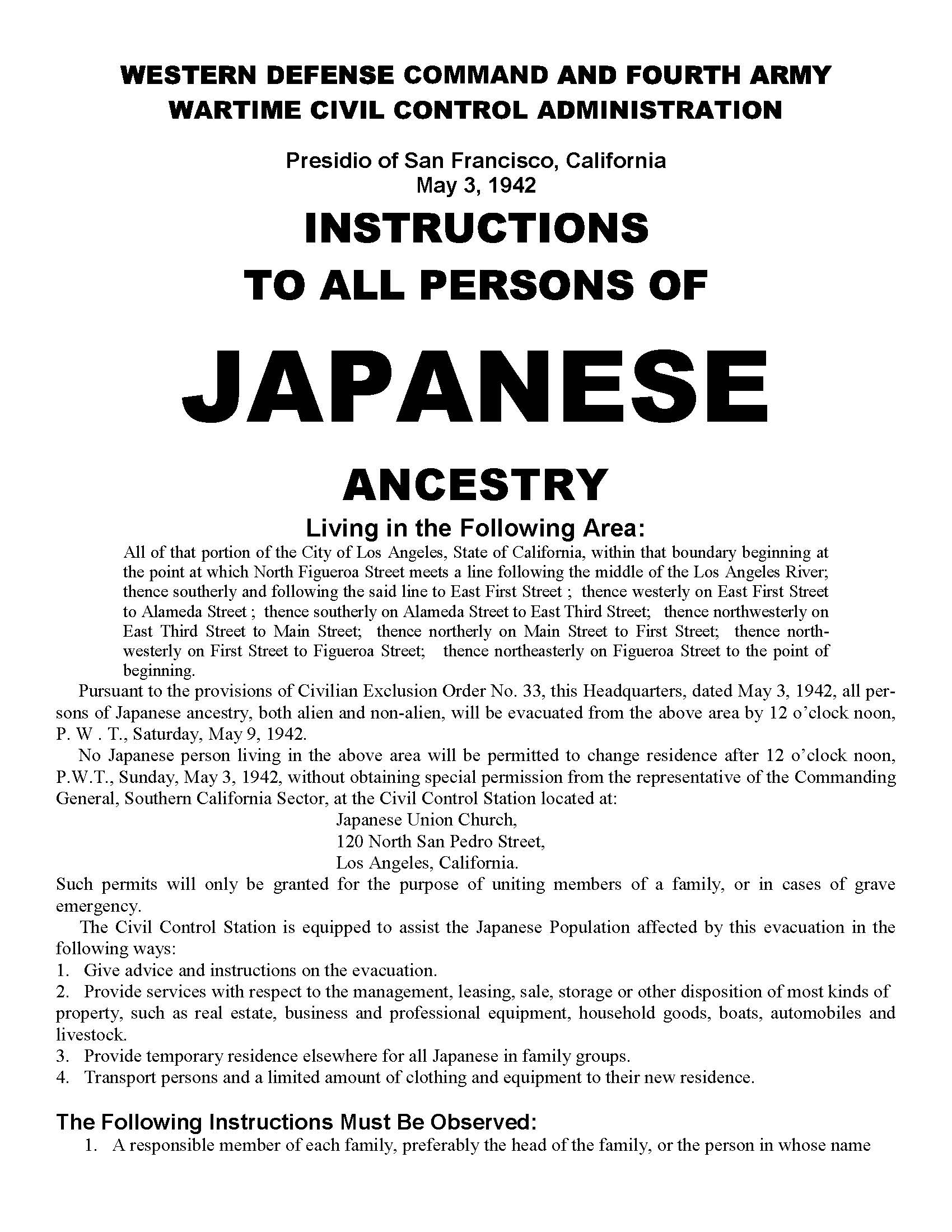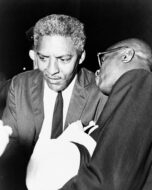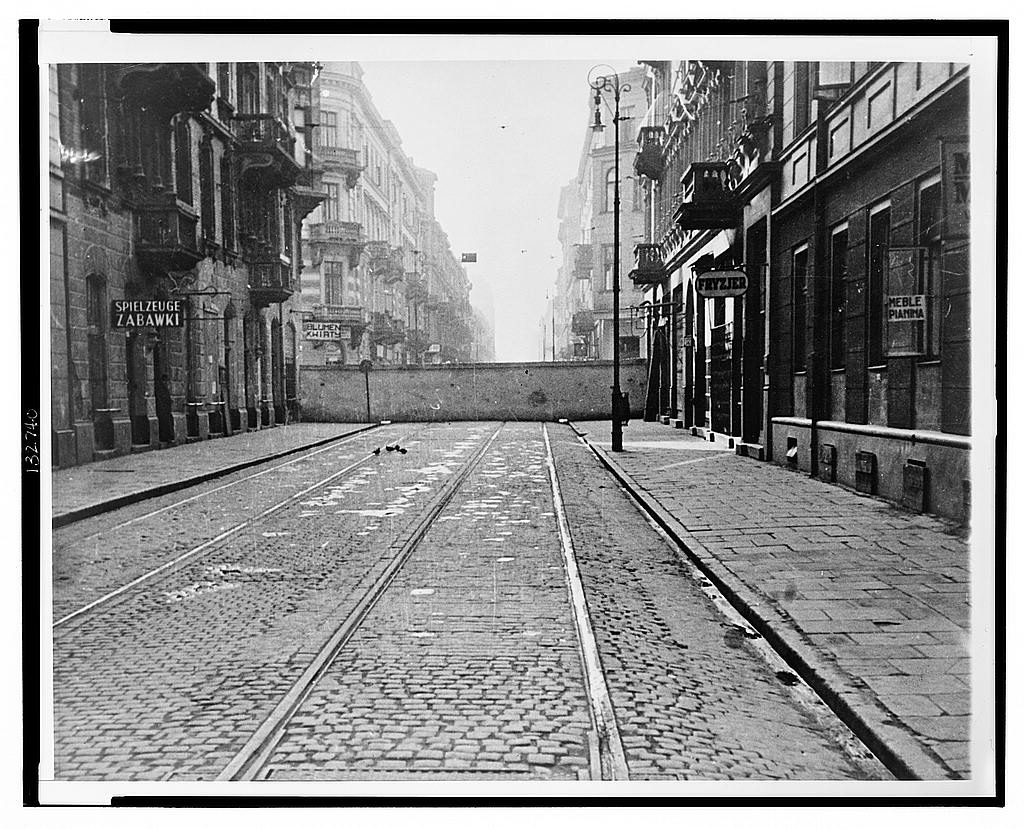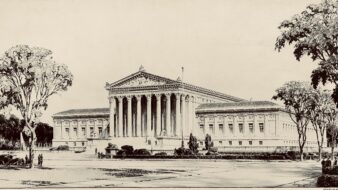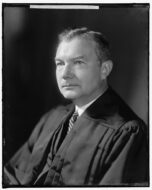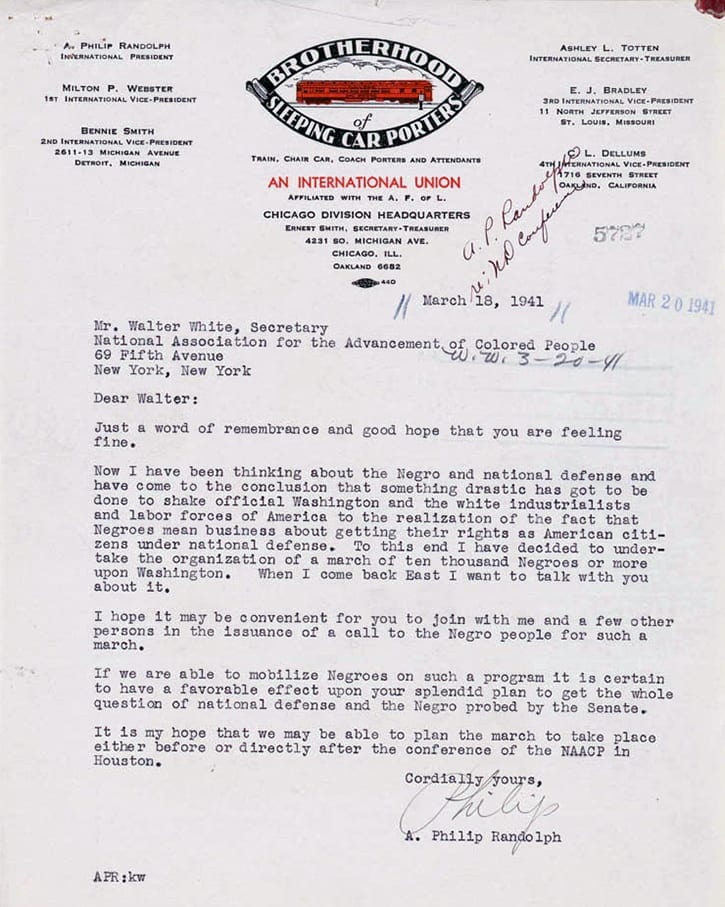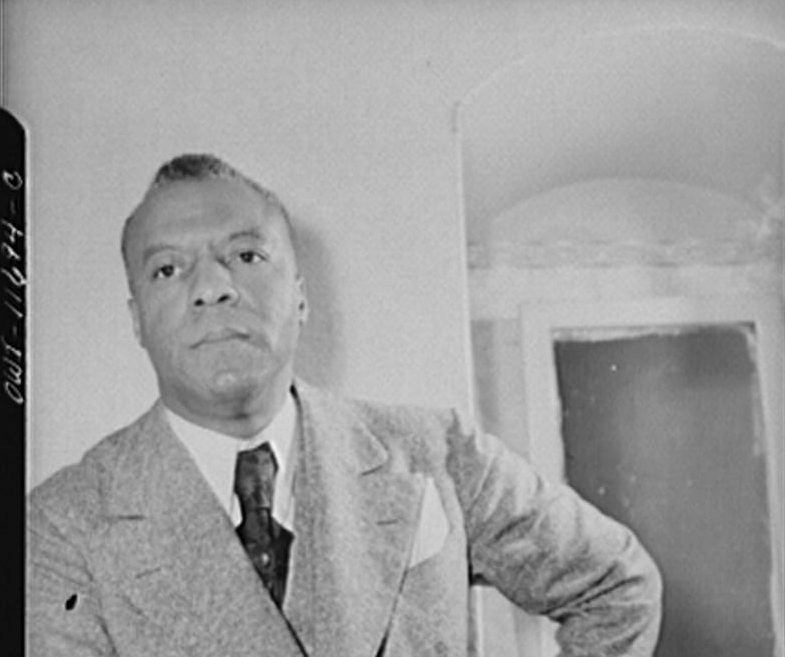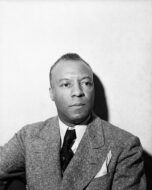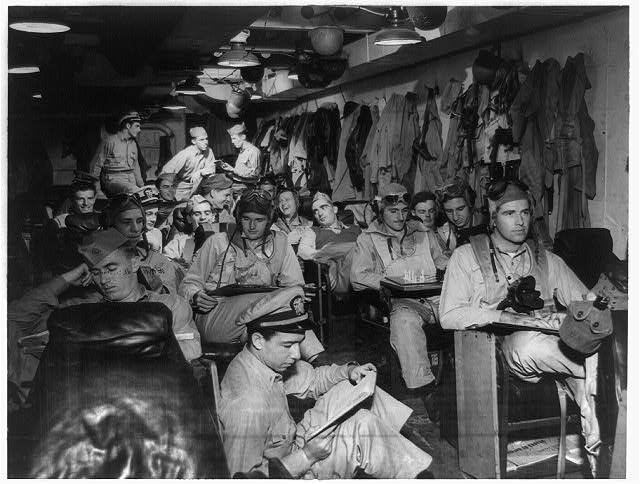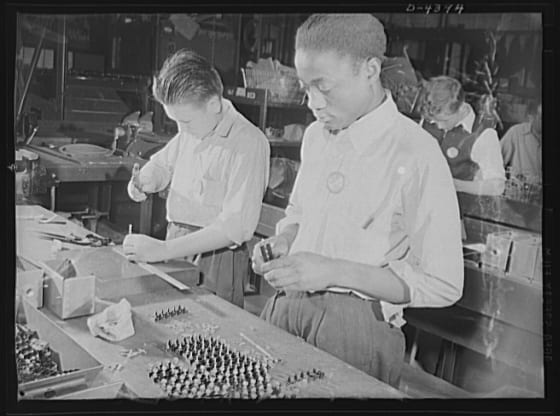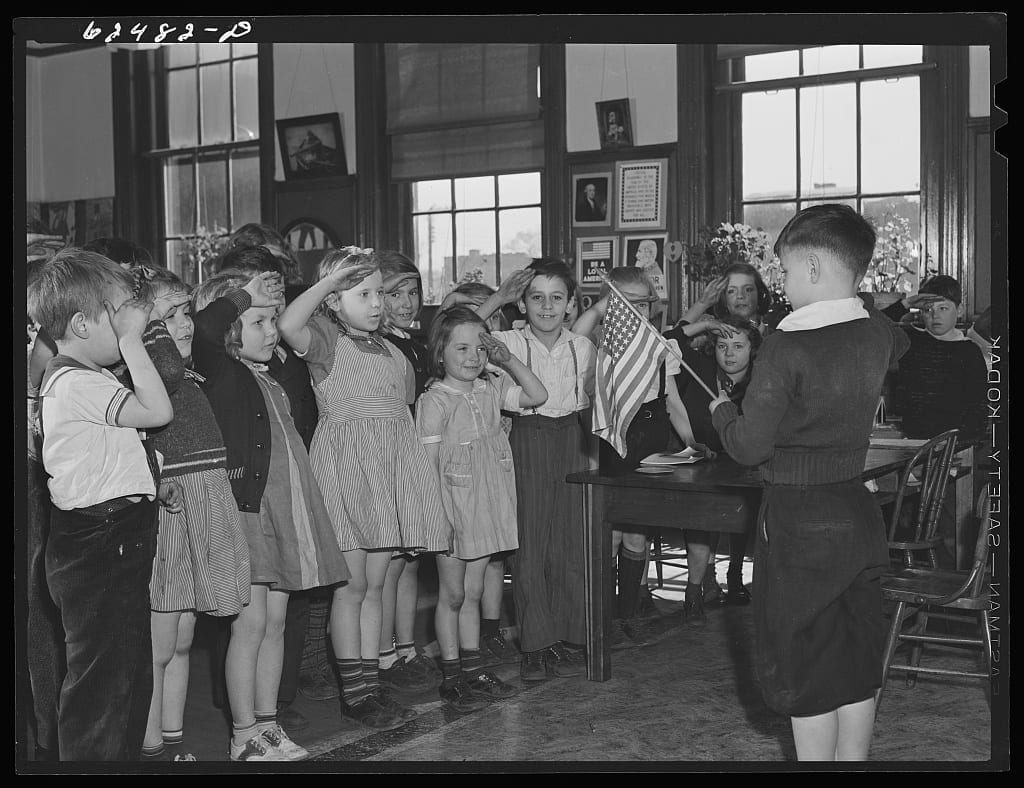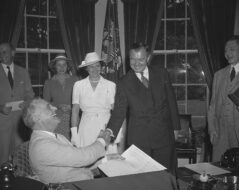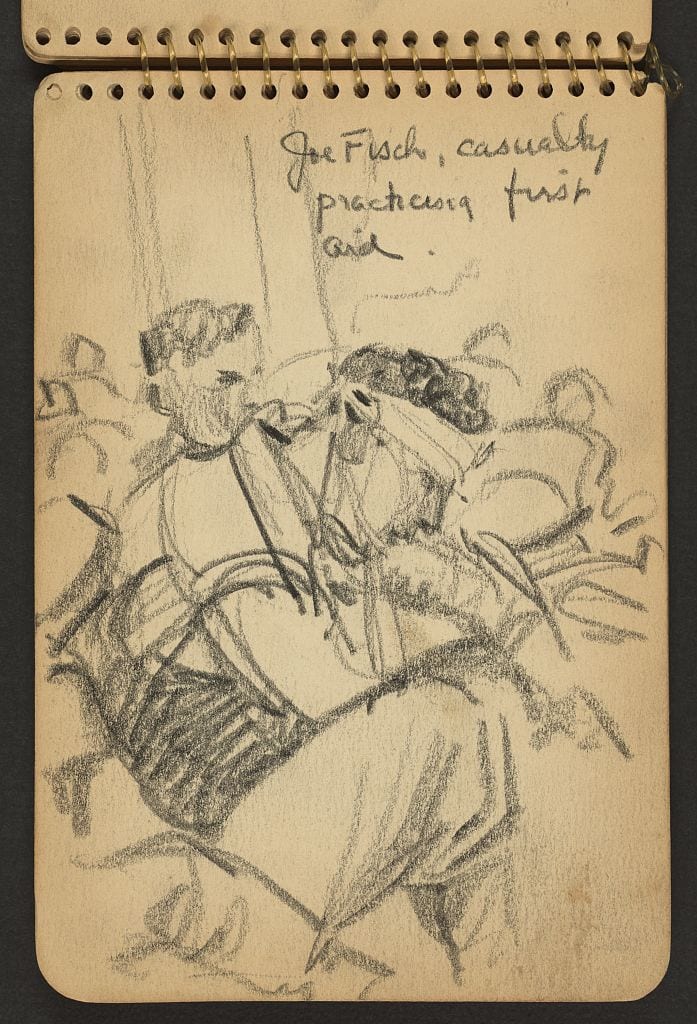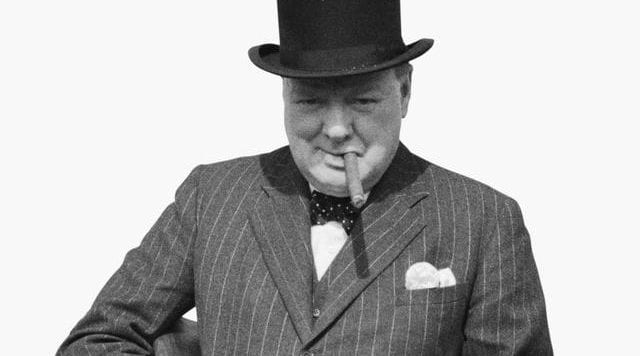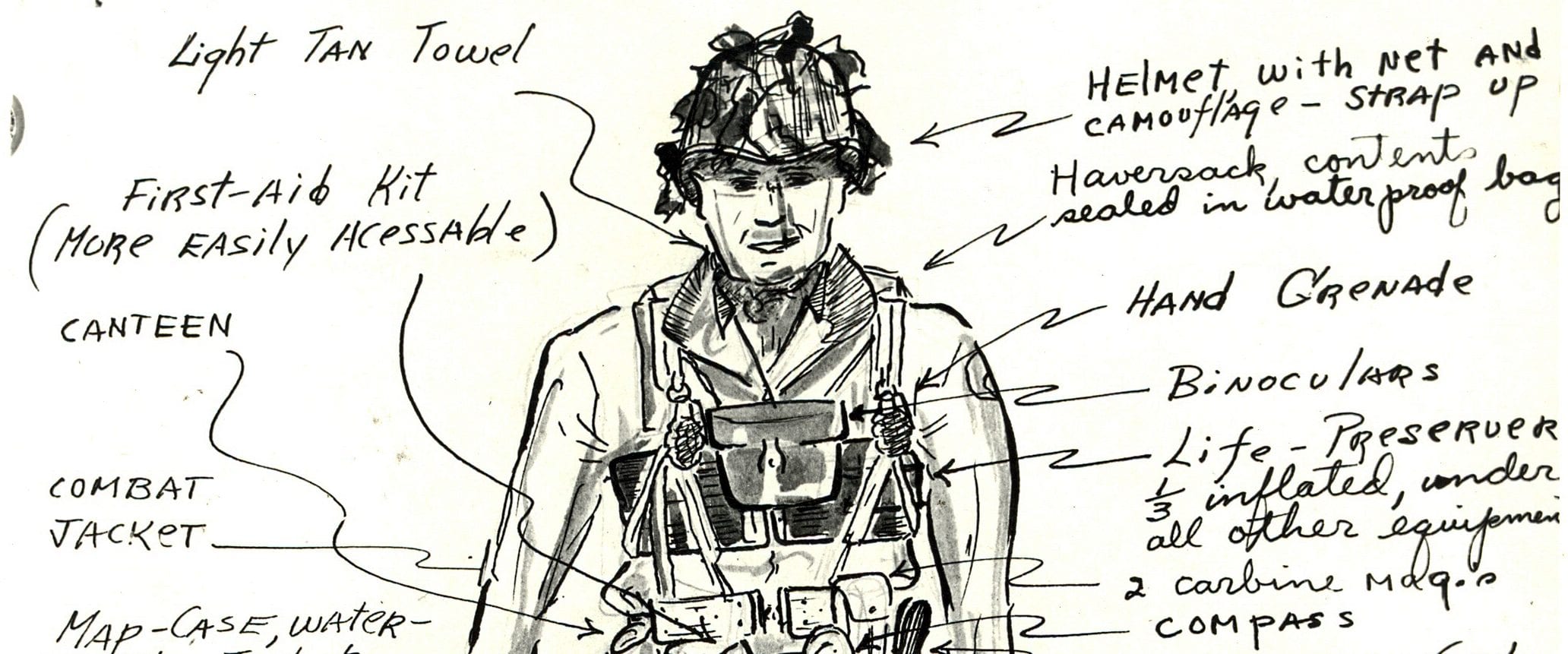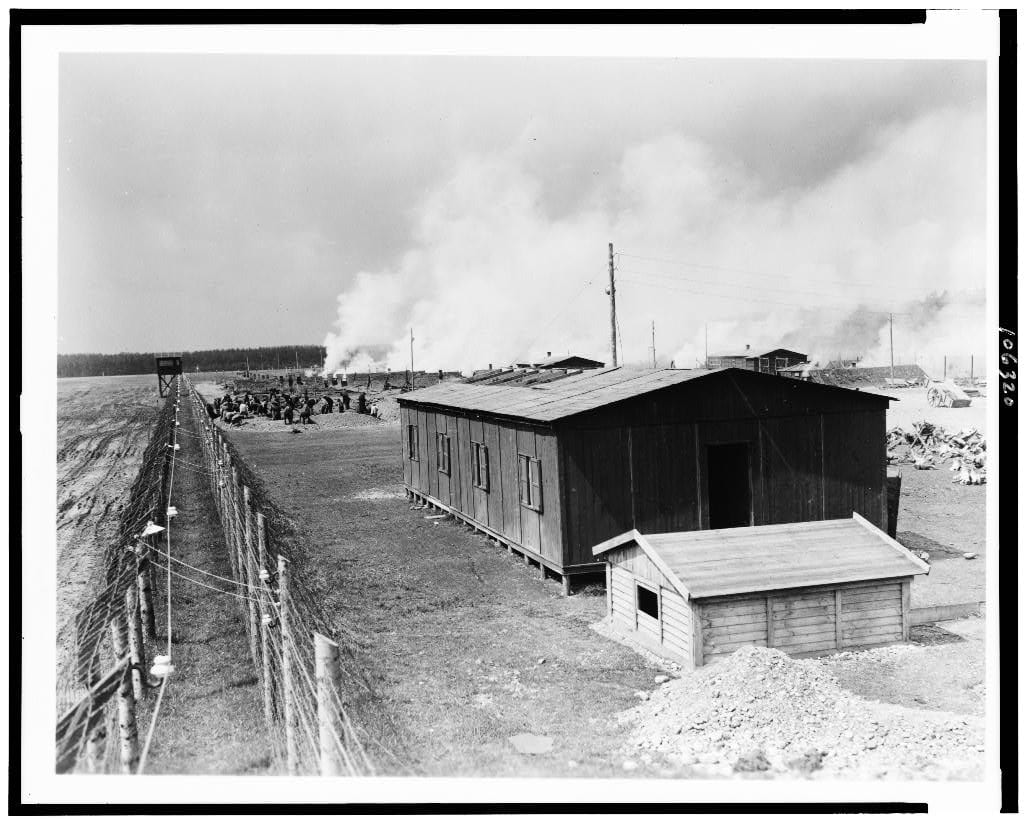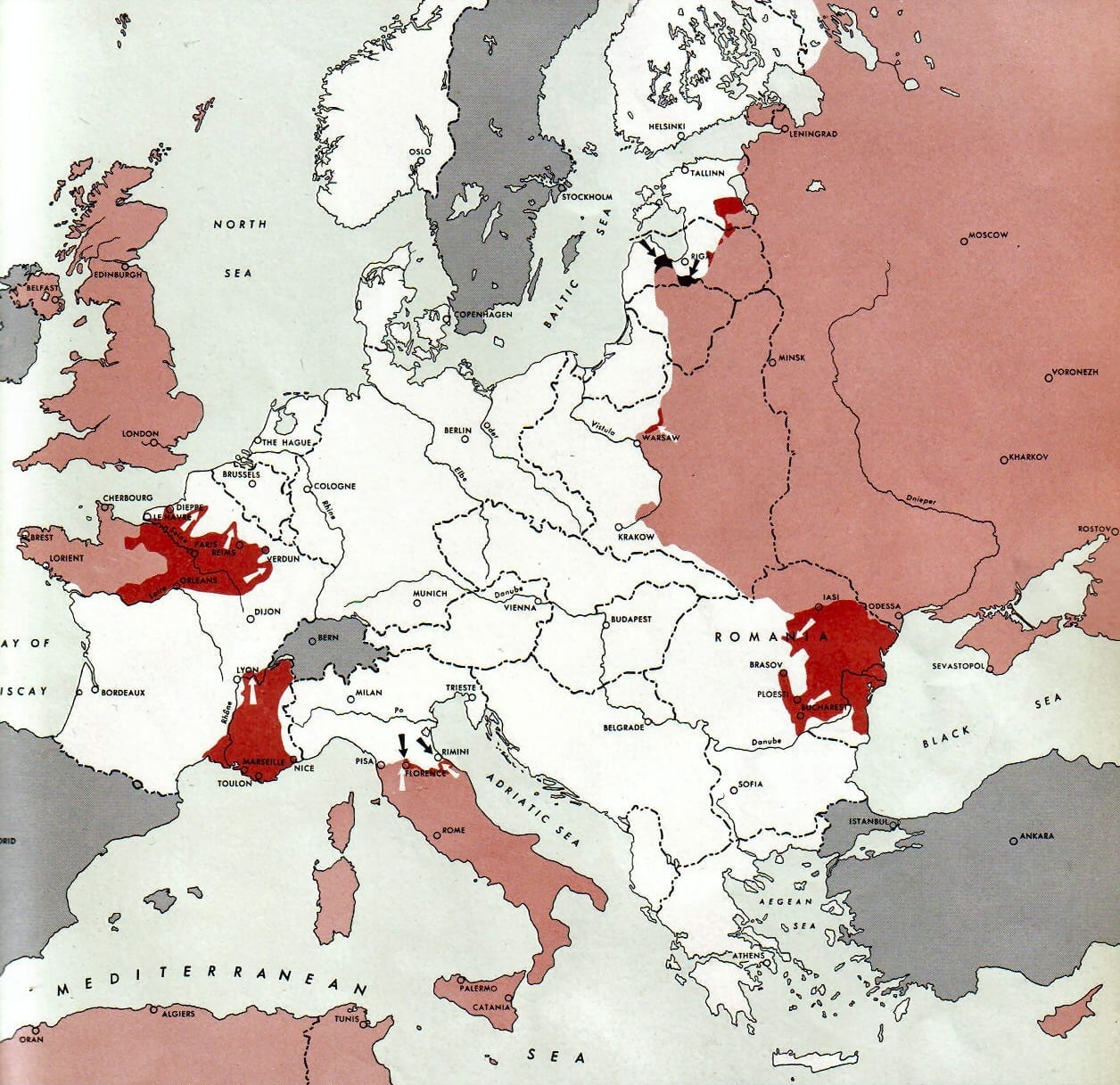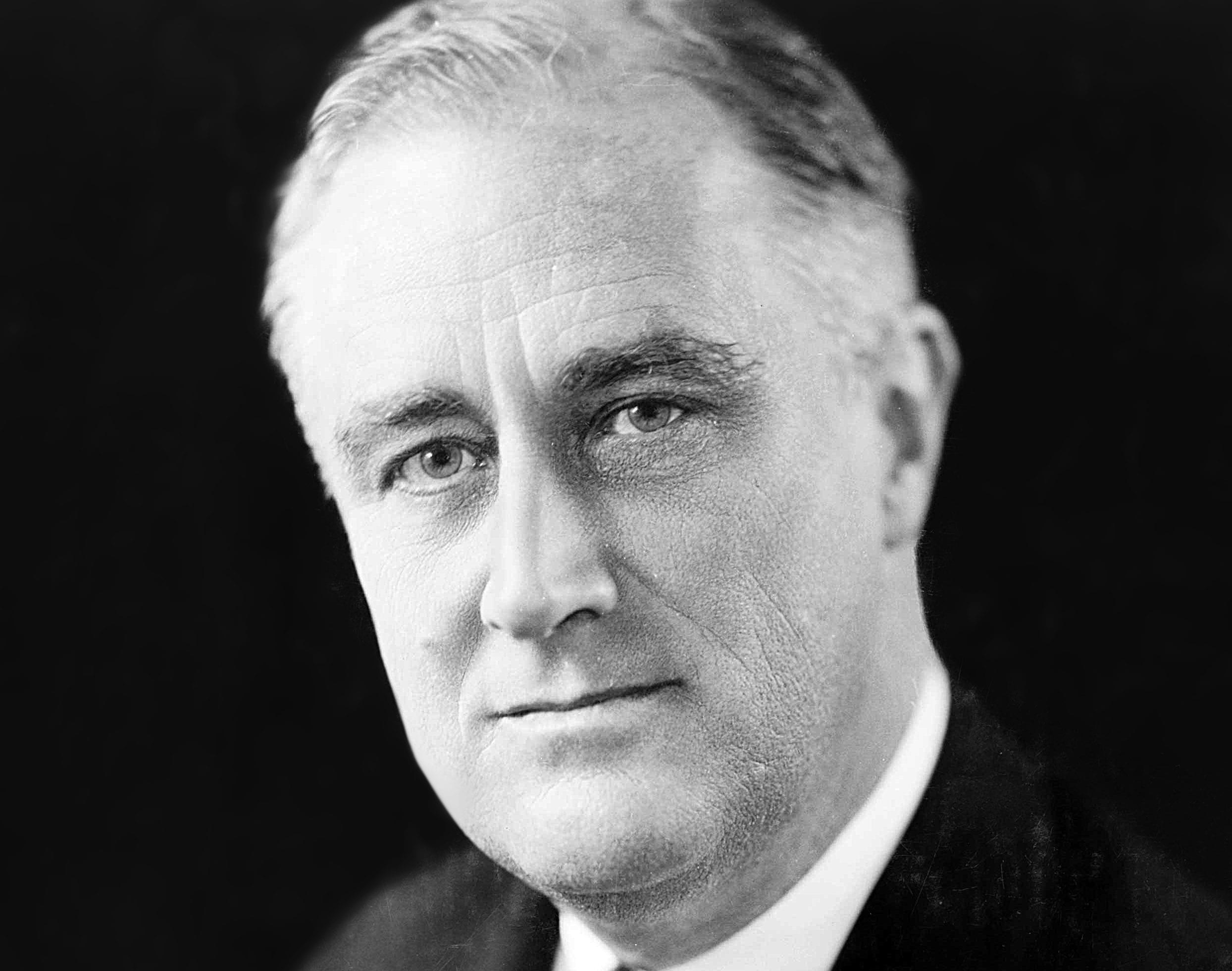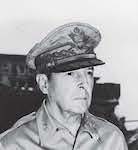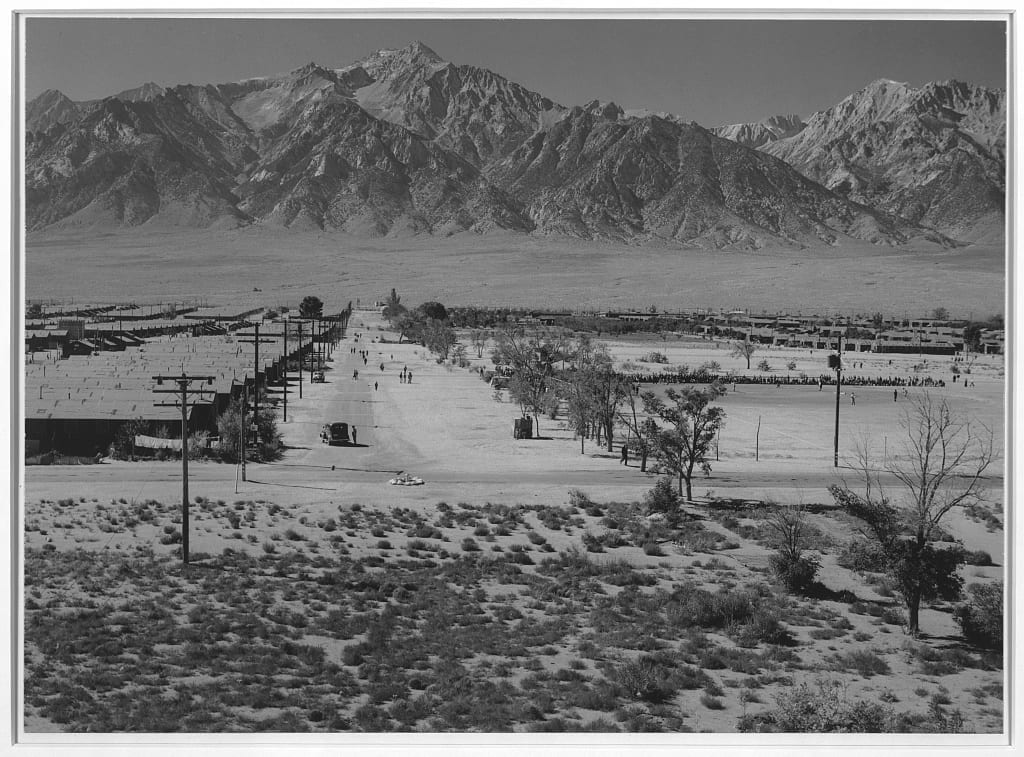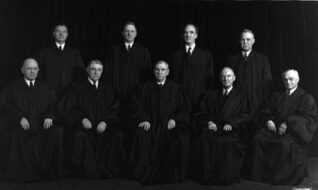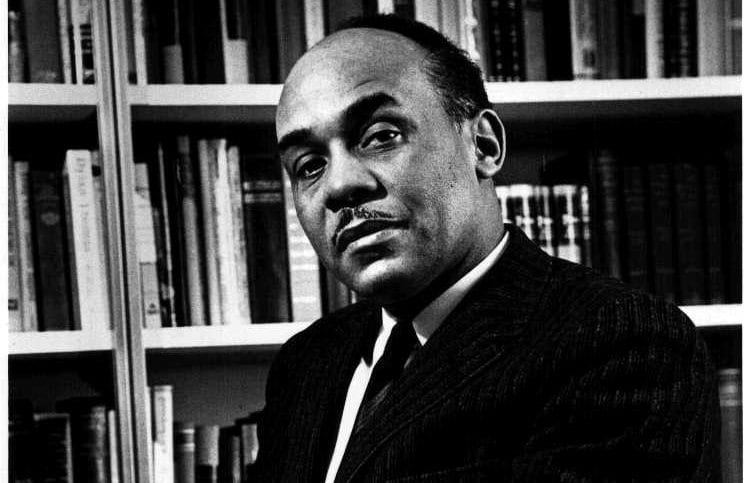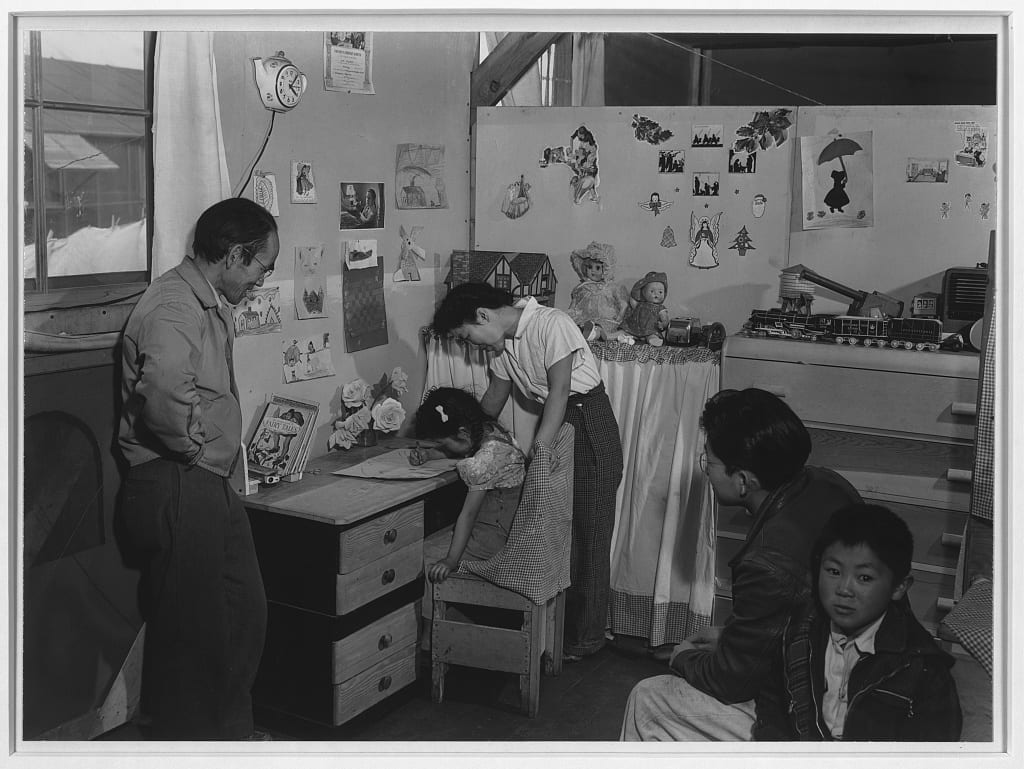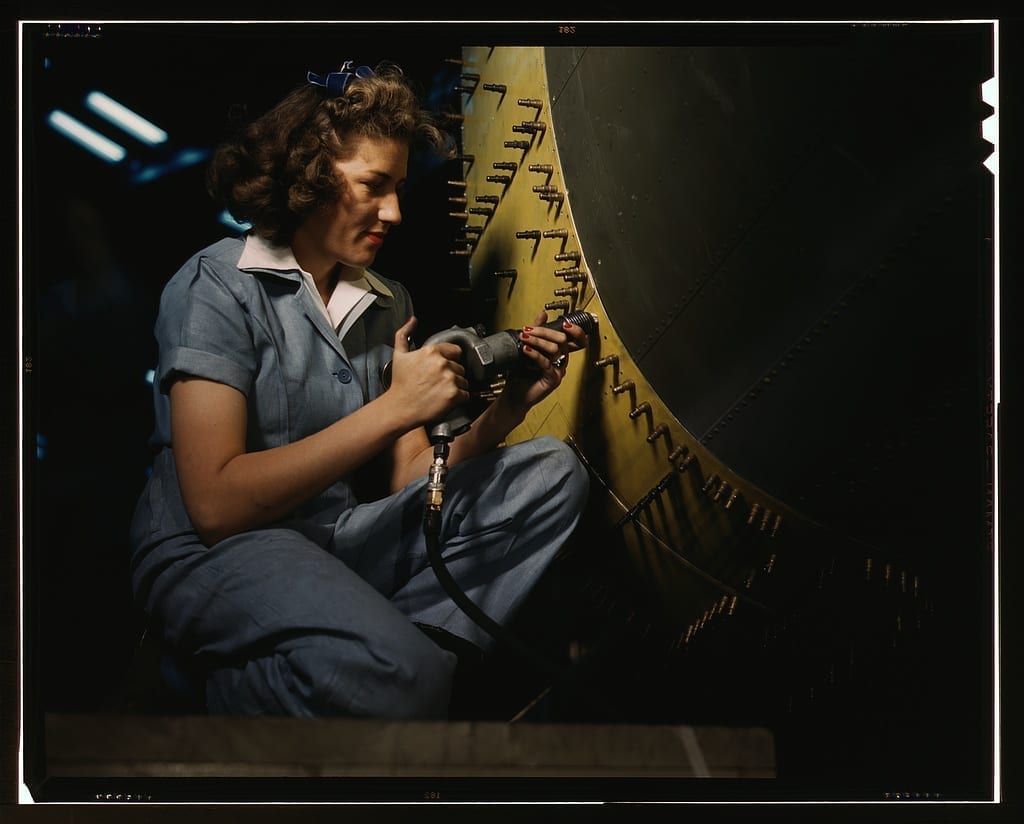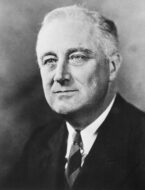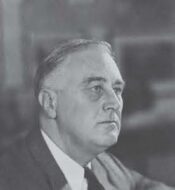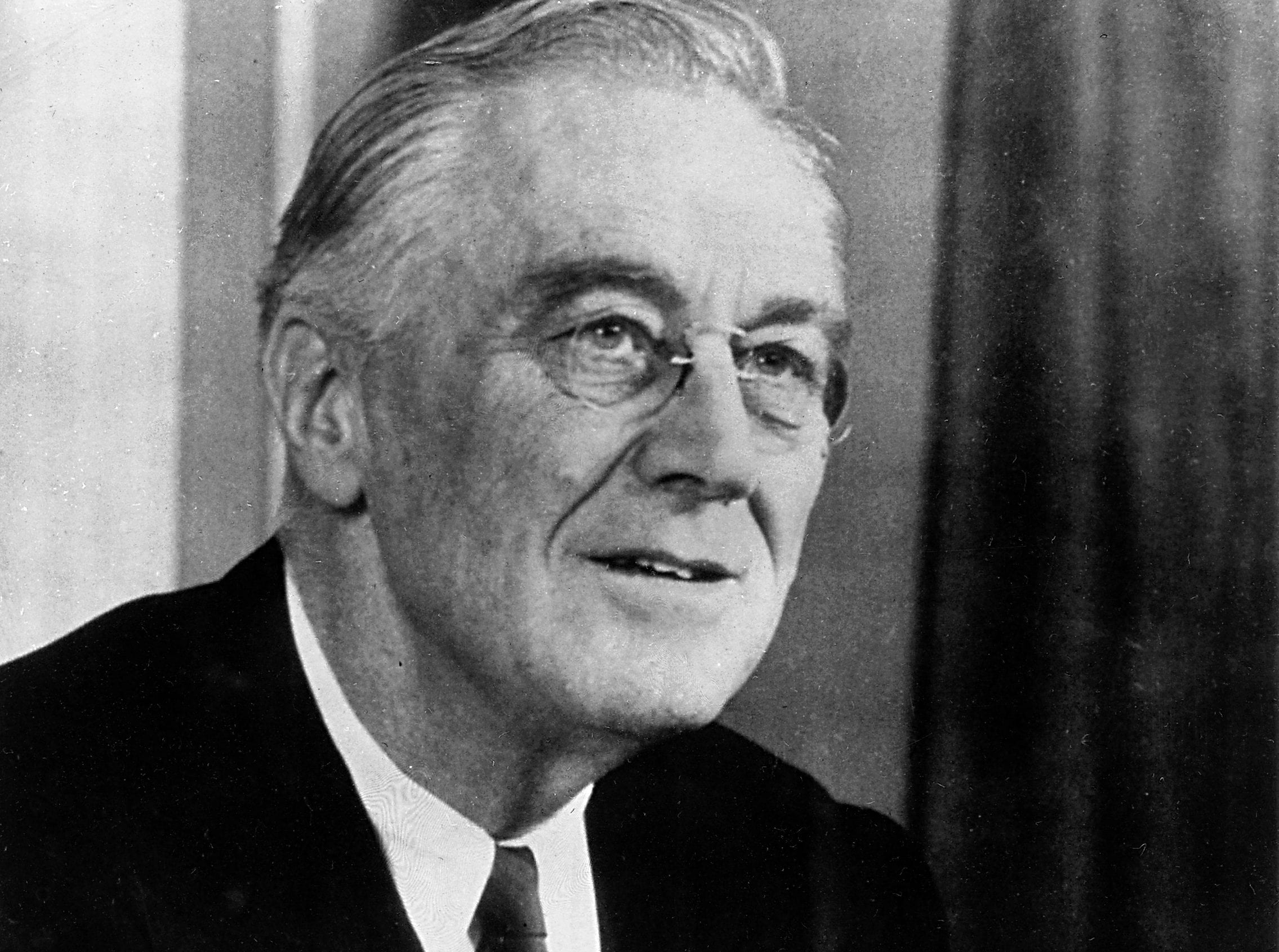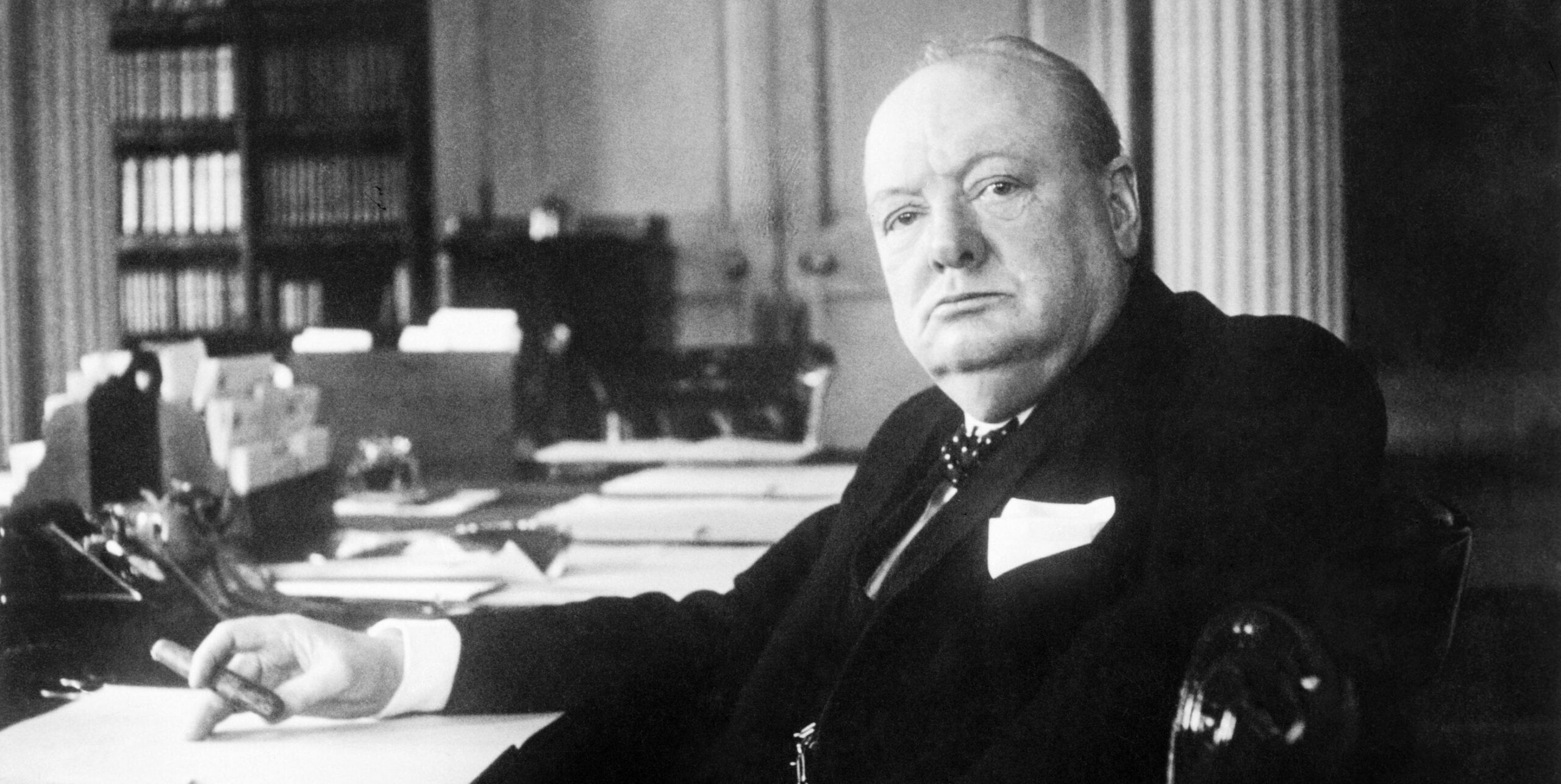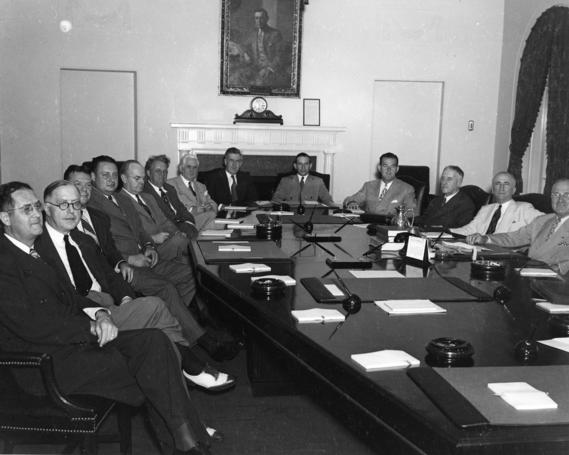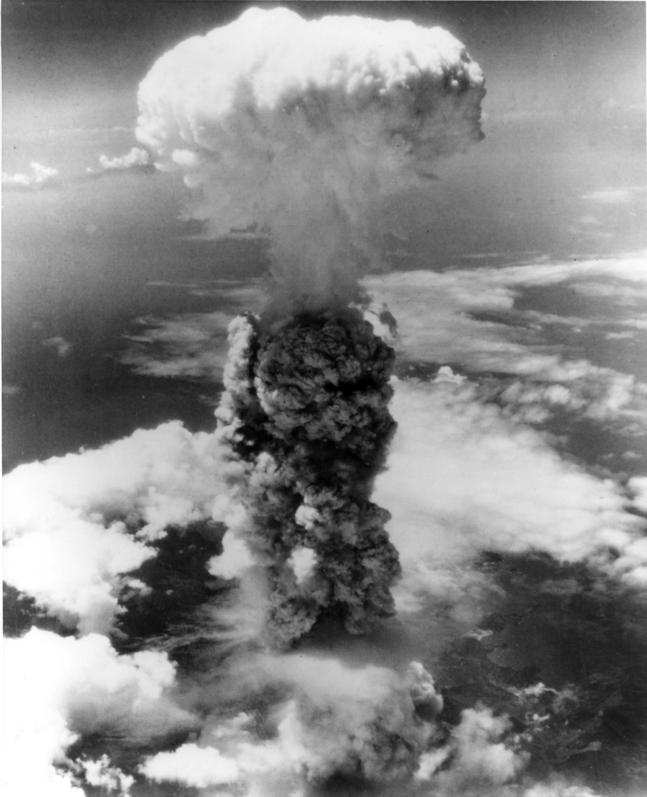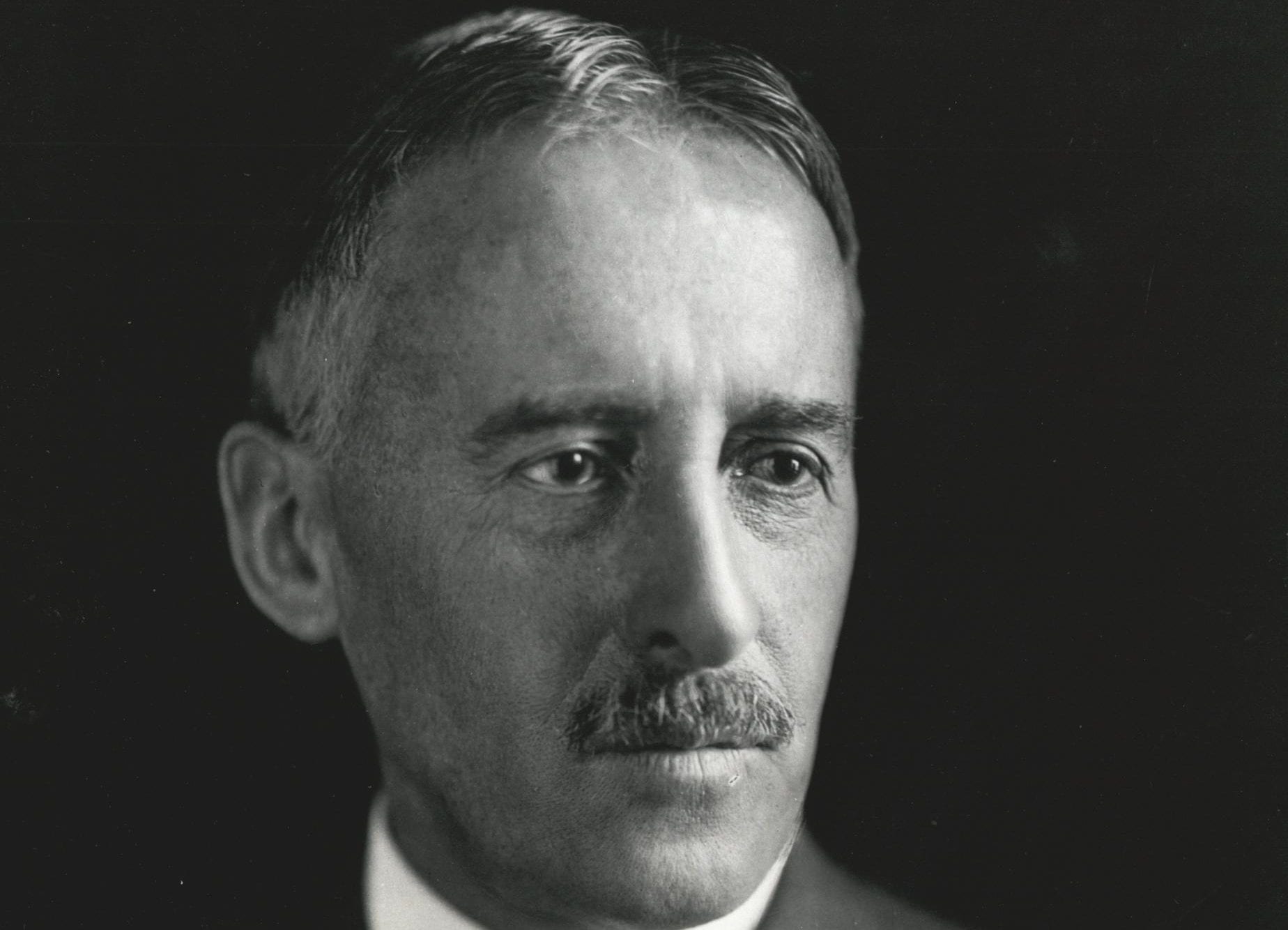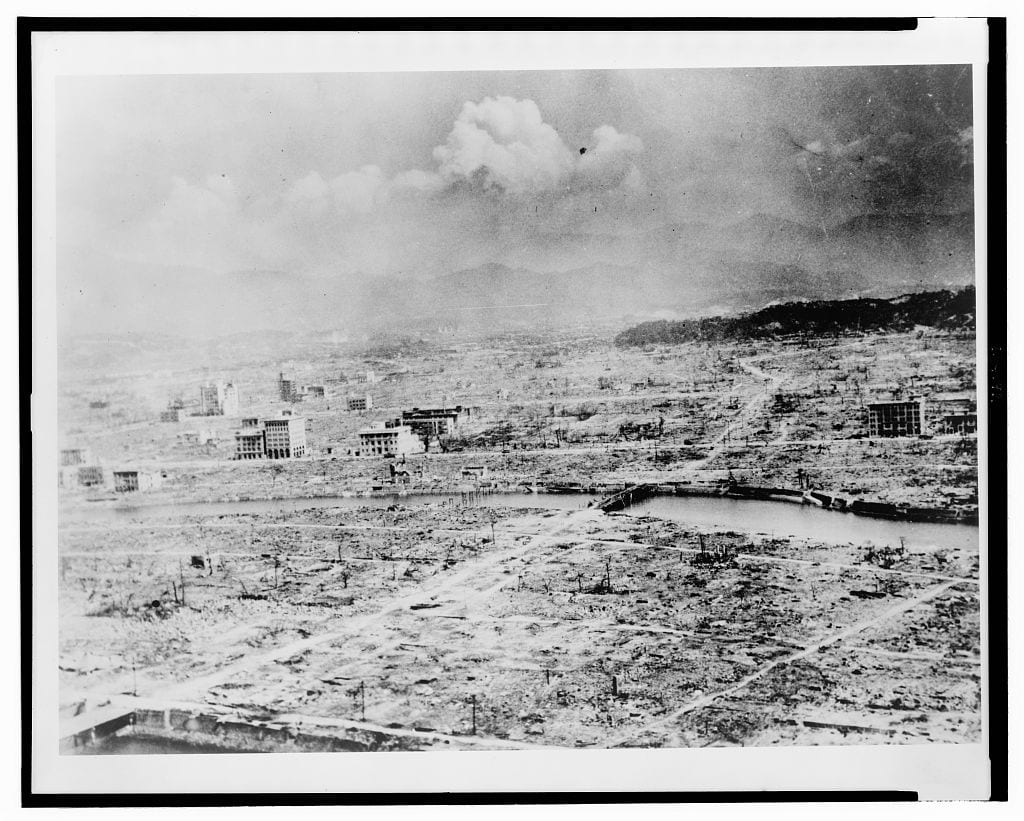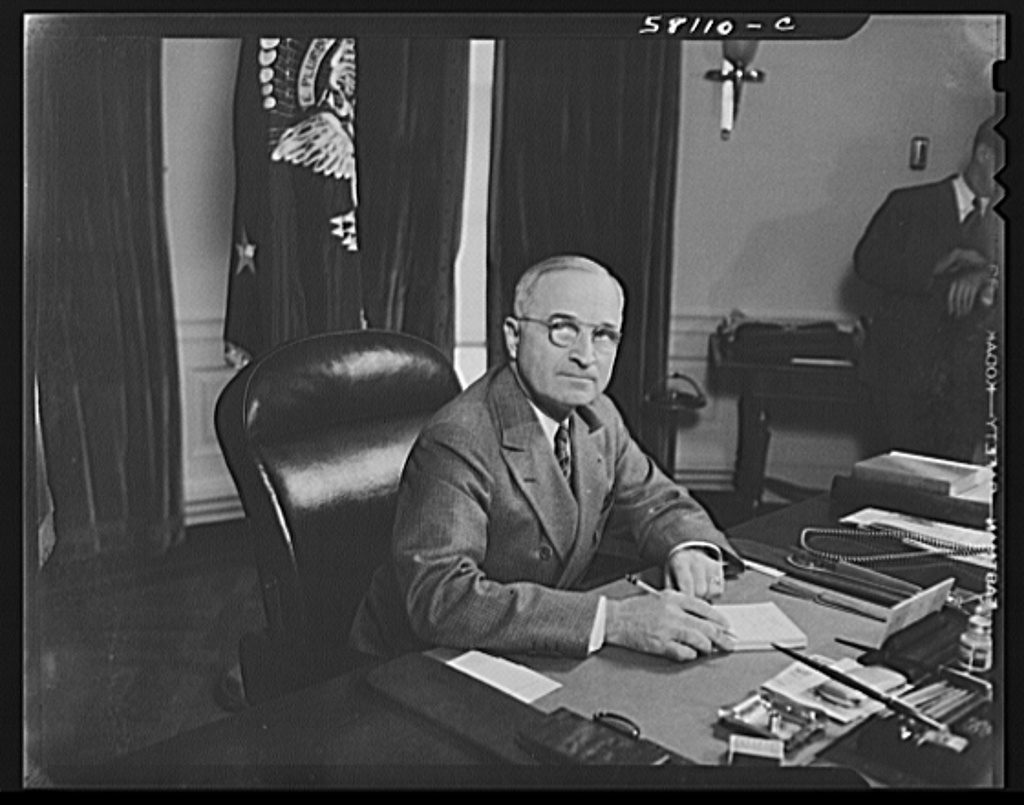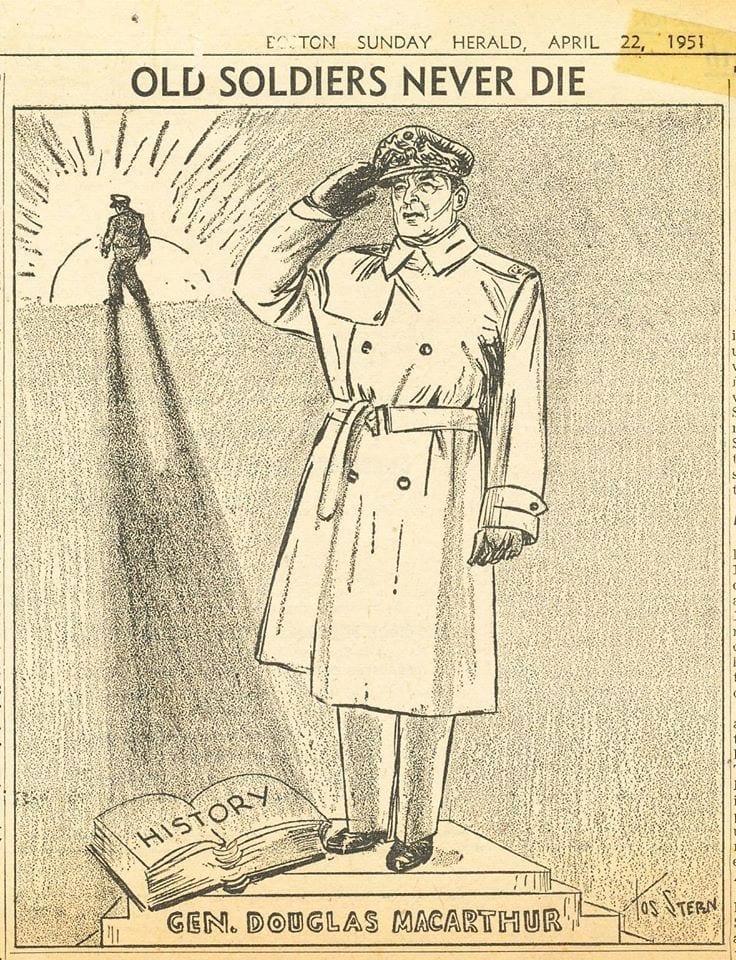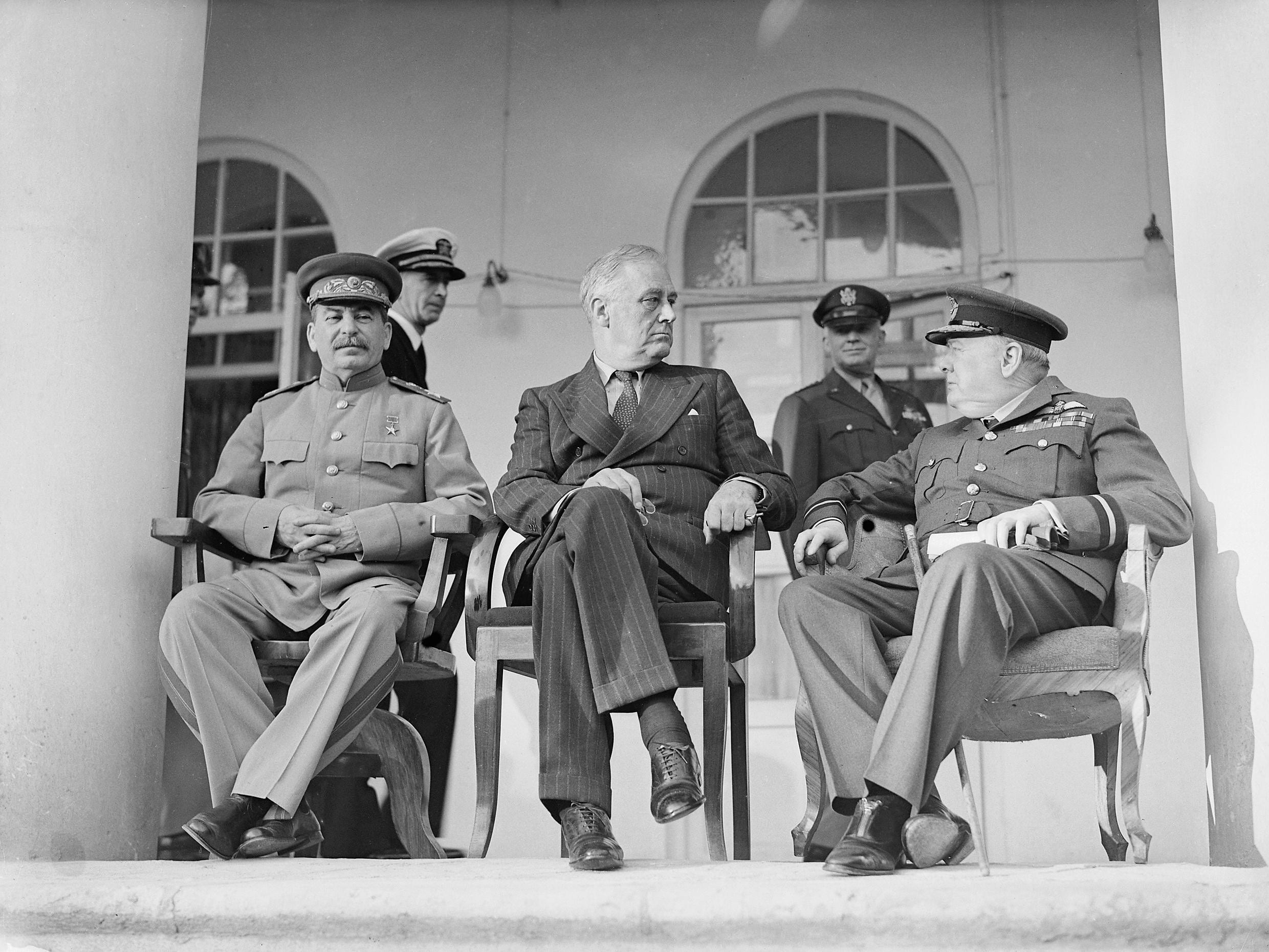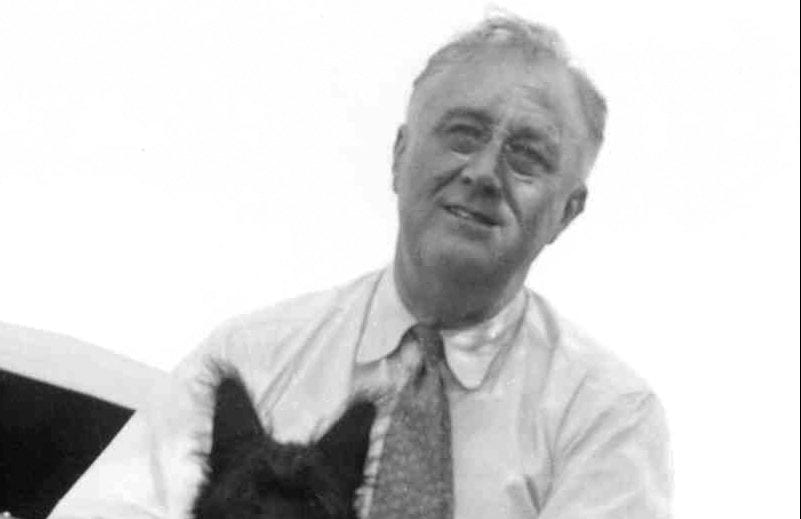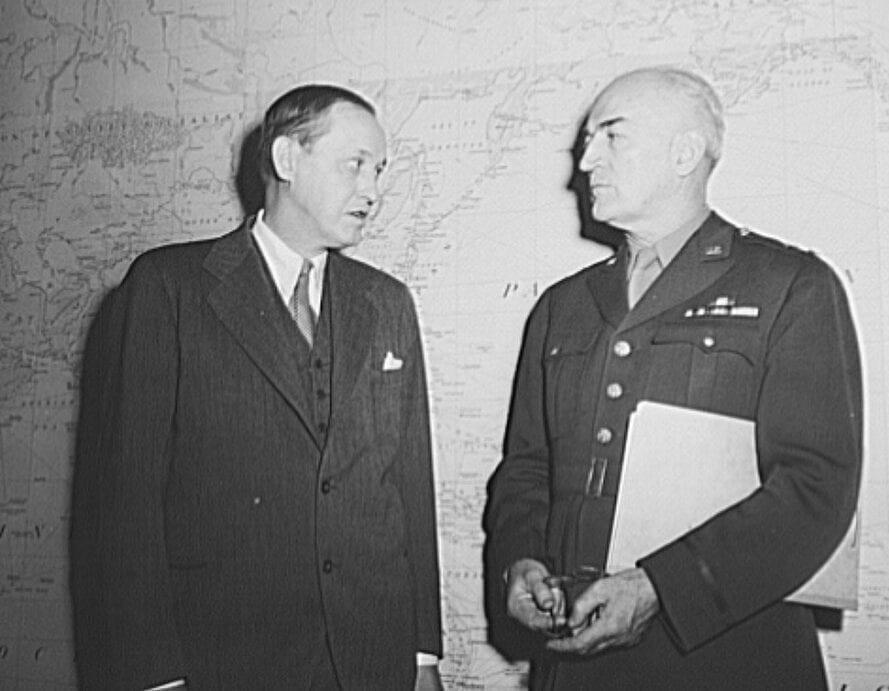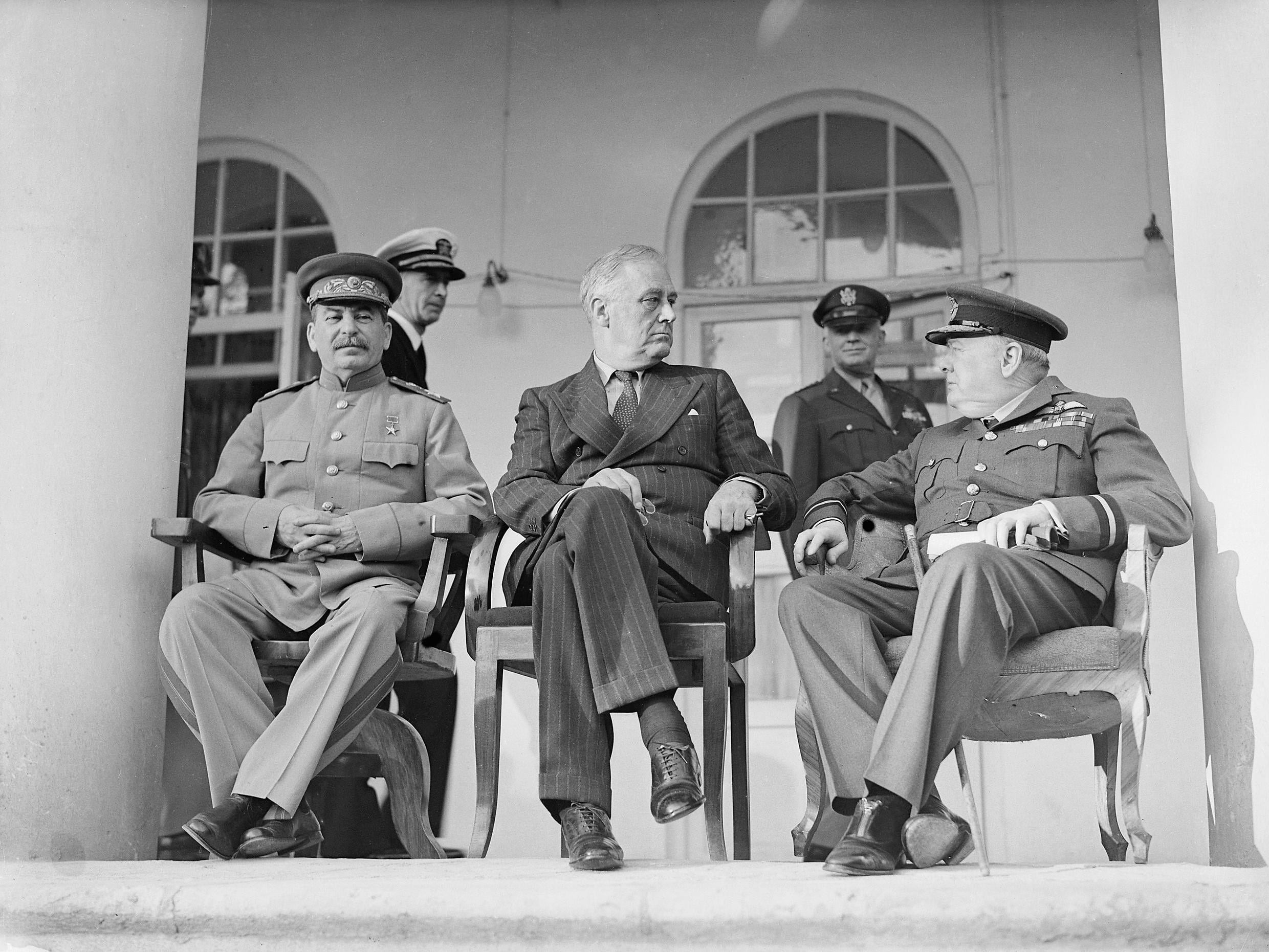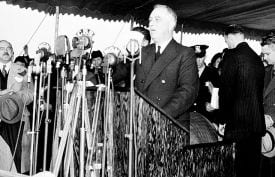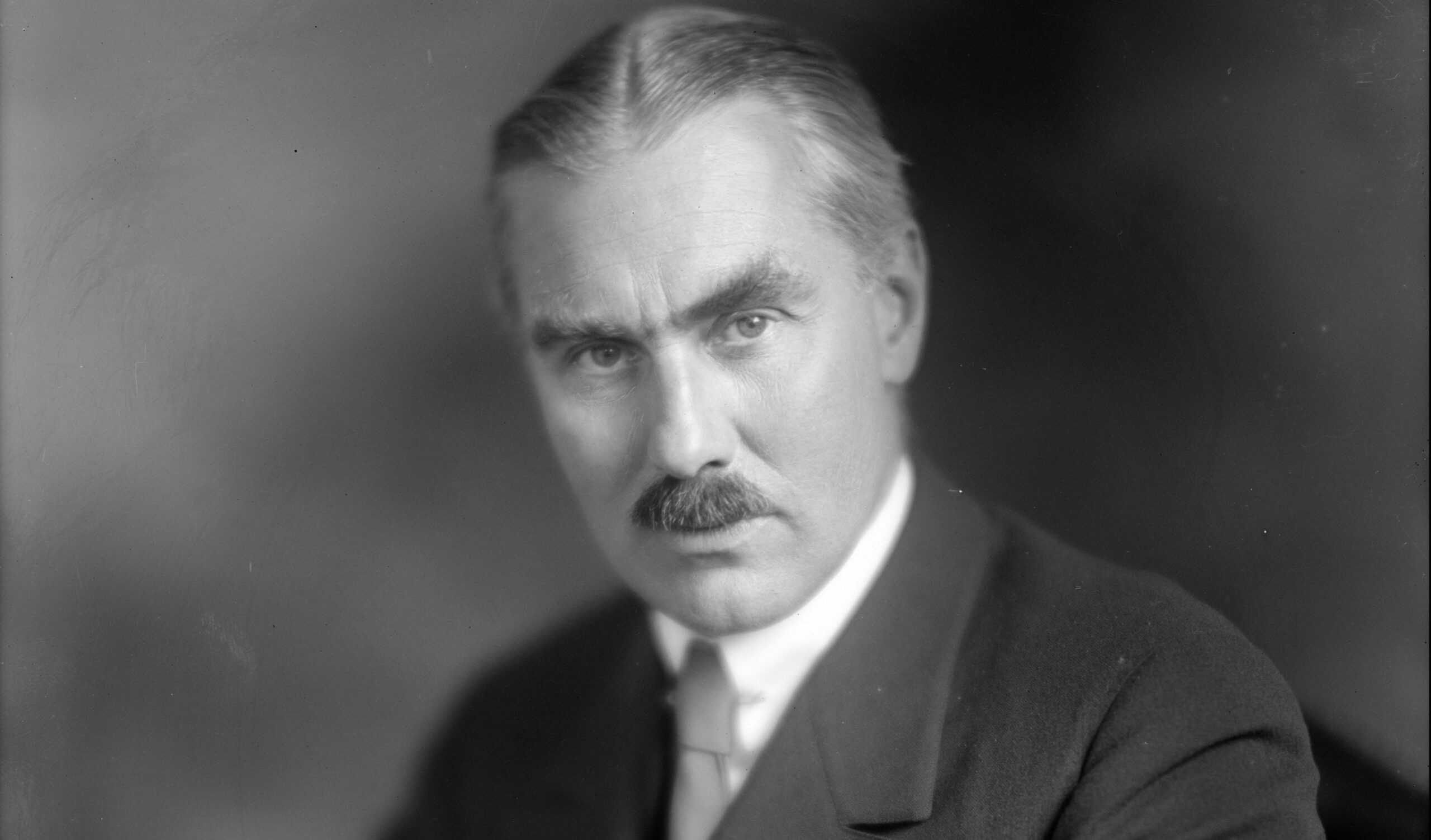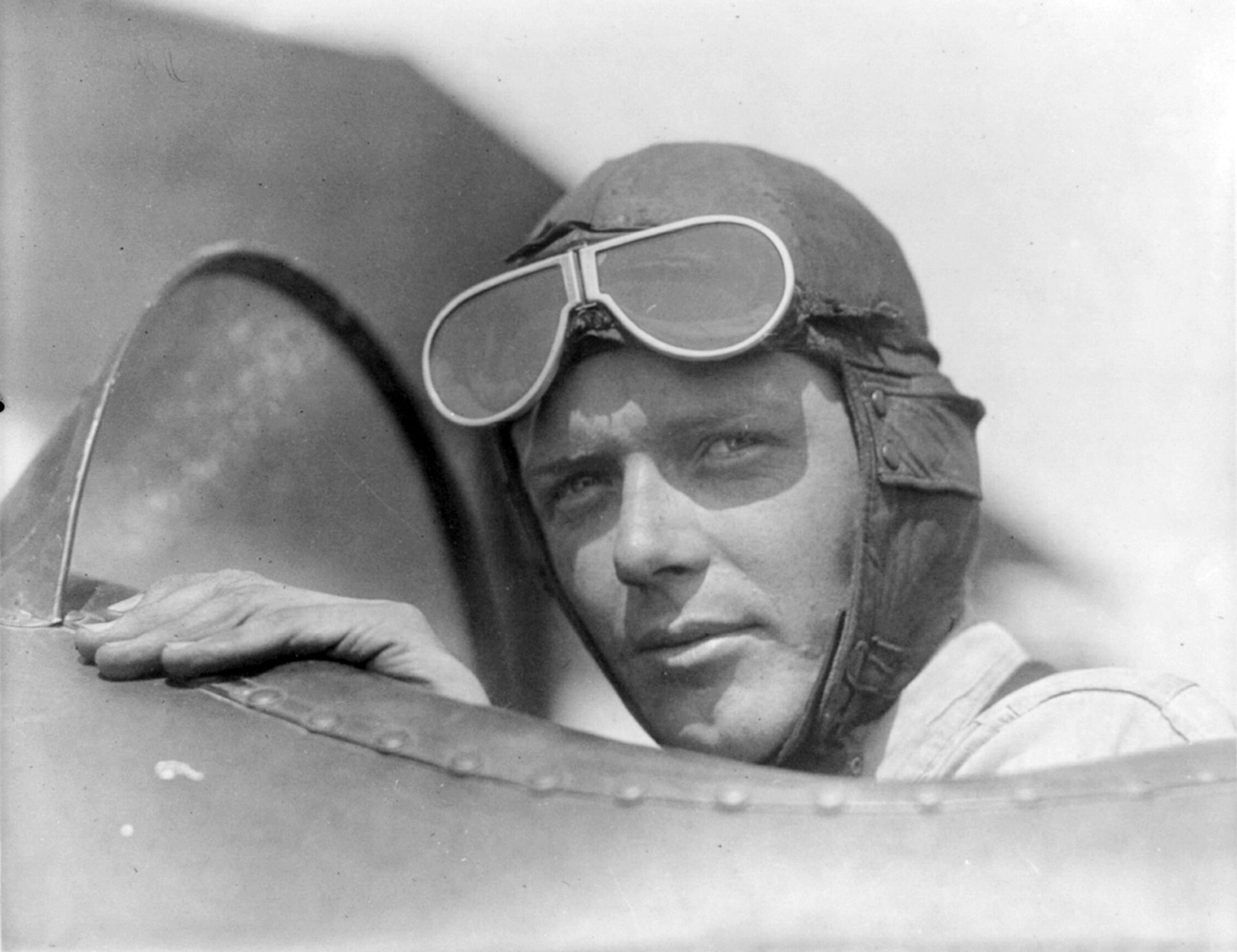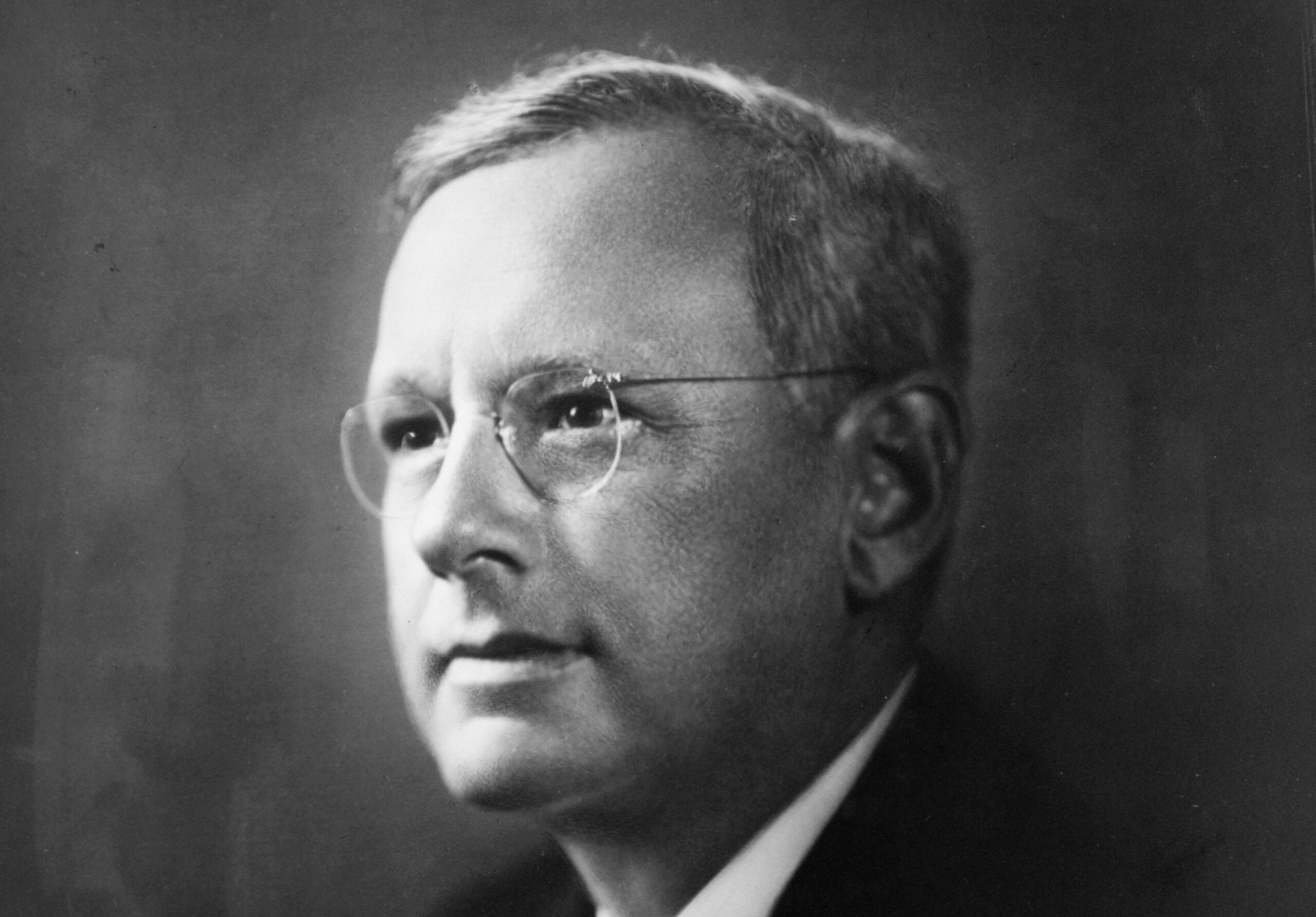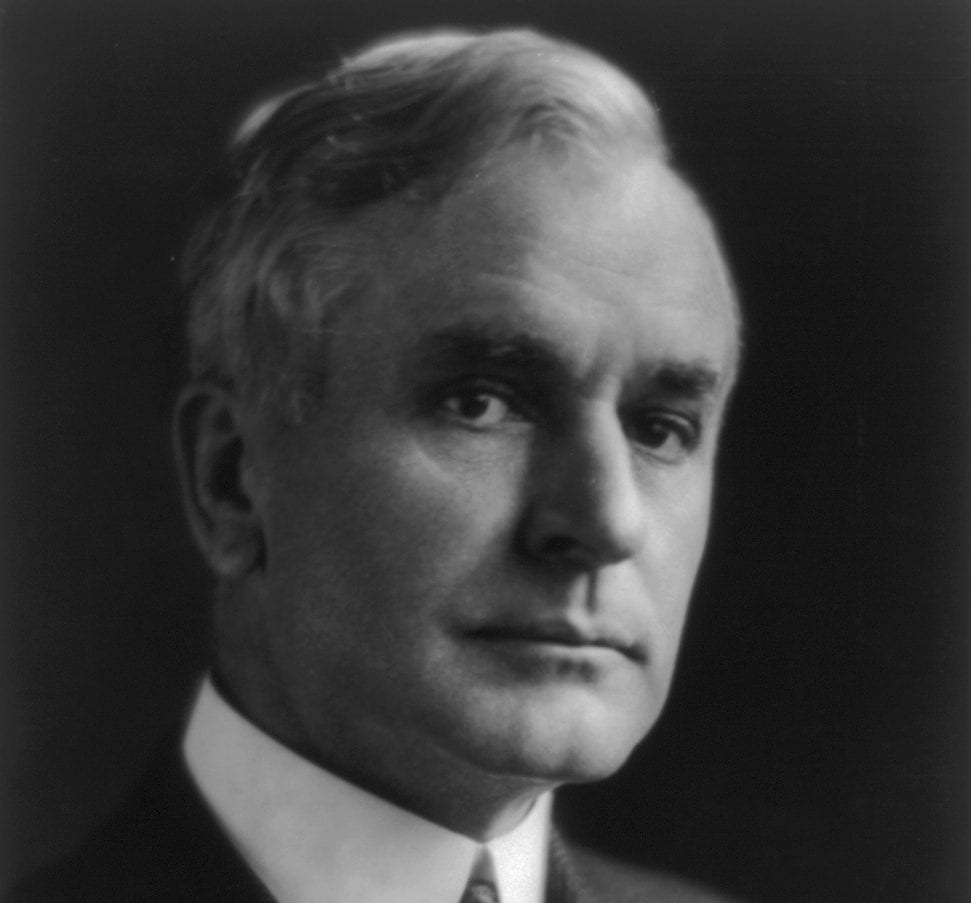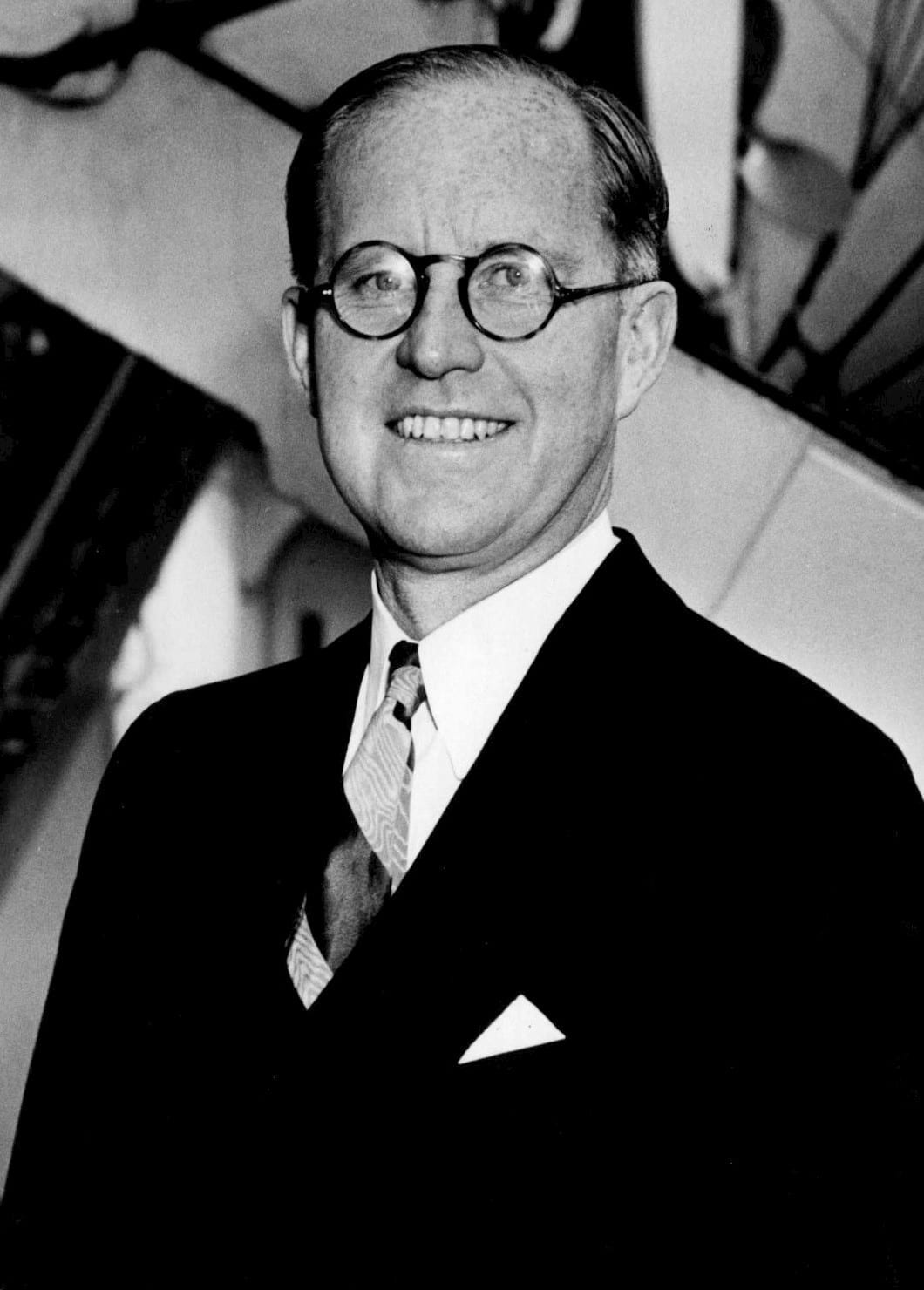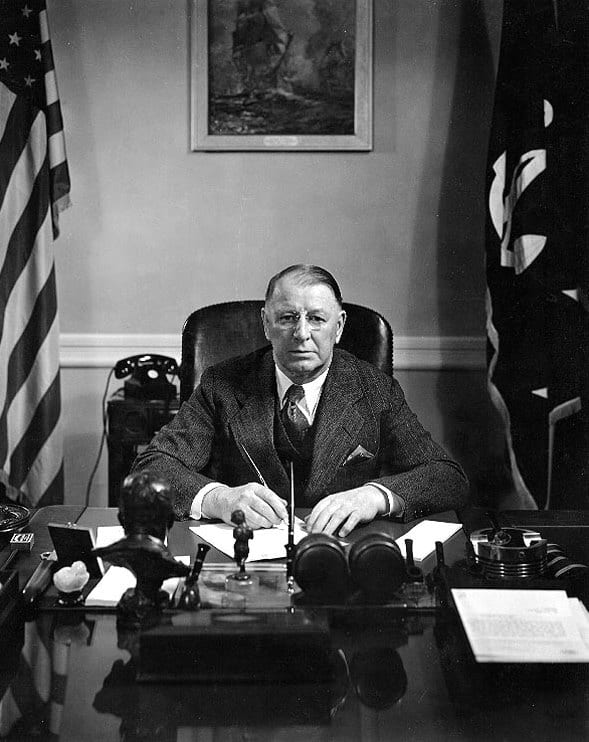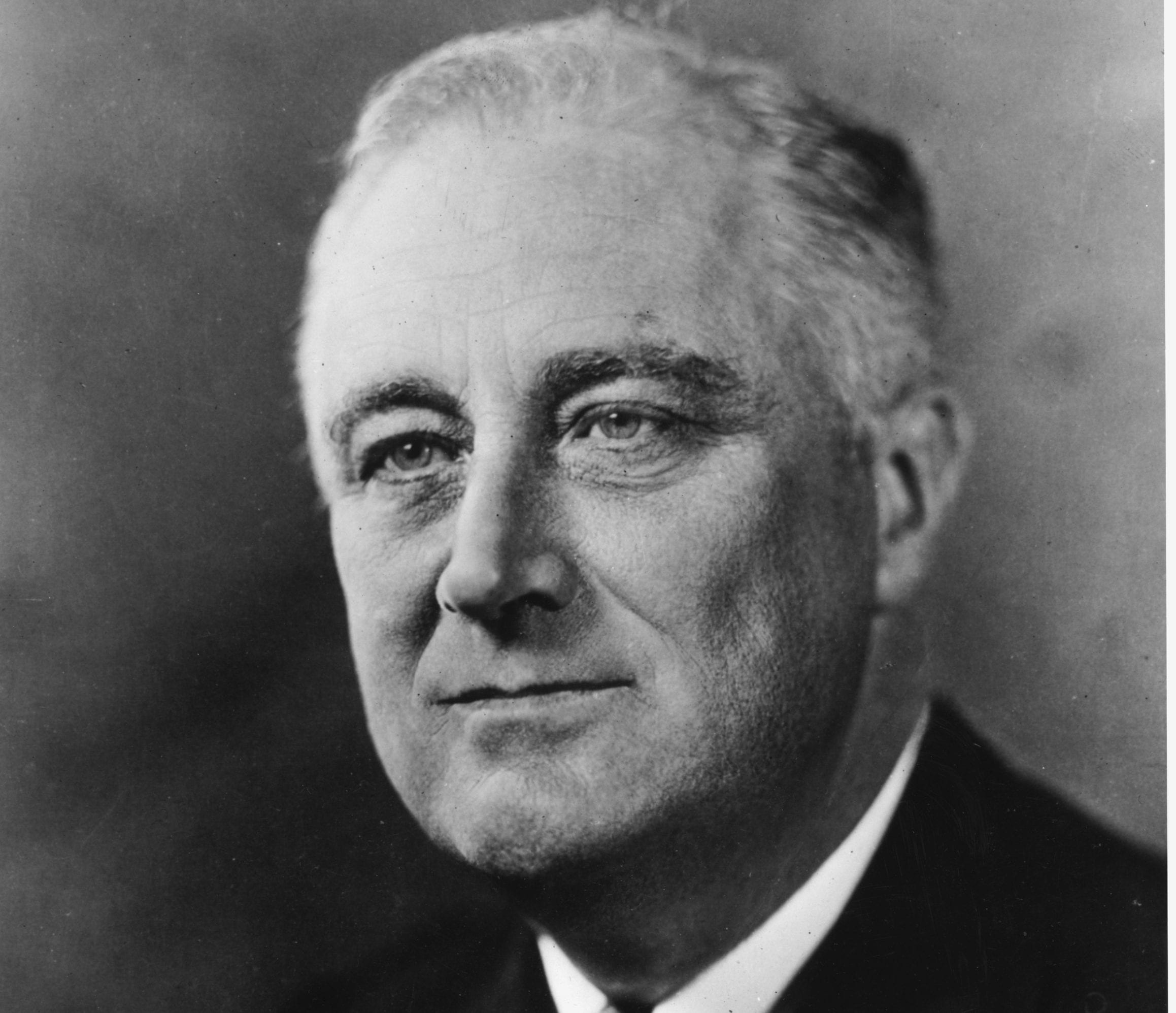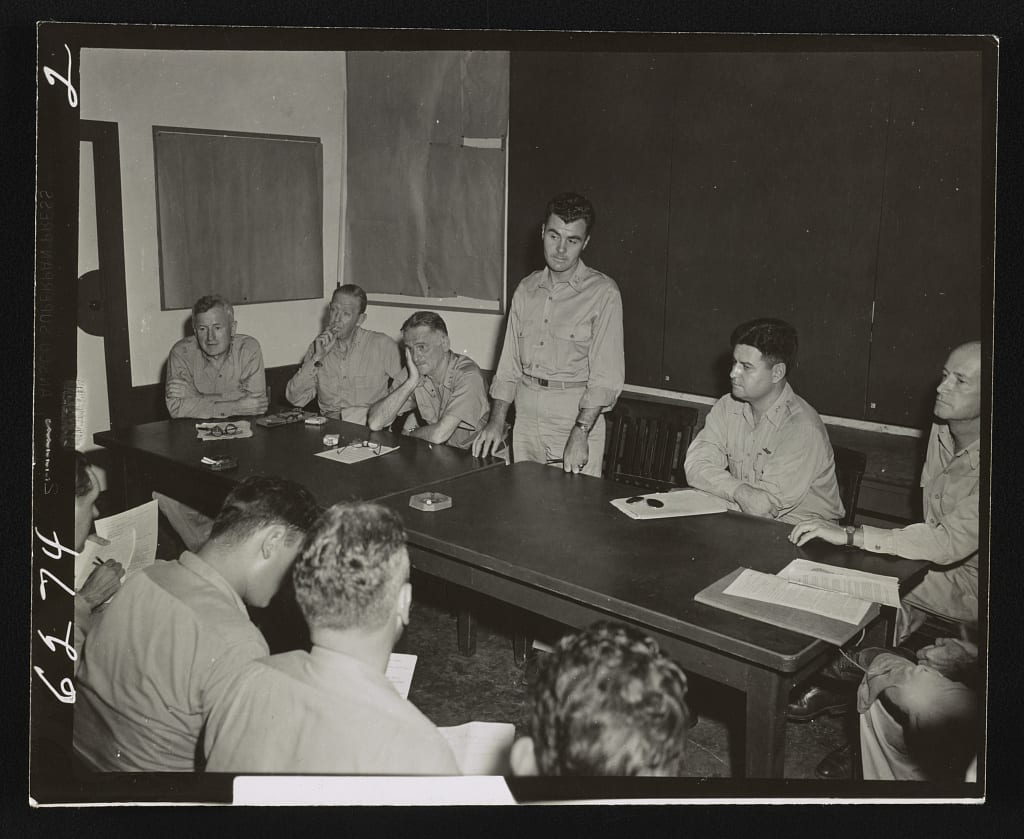
Introduction
James J. Fahey (1918–1991) became a literary celebrity in 1963 when he published the secret wartime diary that he had kept from October 1942 to December 1945. Fahey wrote graphically about the brutality of the naval war in the Pacific while serving as a seaman first class on the USS Montpelier. He worked as a garbage man until he retired, and donated the profits from his book to charity.
Source: Excerpts from Pacific War Diary, 1942–1945 by James J. Fahey (New York: Houghton Mifflin, 1963). Copyright renewed 1991 by James J. Fahey. Used by permission of Houghton Mifflin Company. All rights reserved. Excerpts available from: Pacific War Diary, 1942-1945, © 1963, and renewed 1991 by James J. Fahey. All rights reserved. Reprinted by permission of Houghton Mifflin Harcourt Publishing Company.
November 23, 1942
It was a great feeling as I staggered up the gangway to the ship with my sea bag in one hand and the mattress cover loaded with blankets, mattresses, etc., over my shoulder. At last I have a home – and a warship at that.
January 26, 1943, New Hebrides
Last night they said we were about 2 ½ hours from the Jap fleet, but let them come. I came out here to see action and I hope this is the biggest battle of all time and it is also an honor to be on the flagship so I think this baby will give a good account of itself. Most of the crew would rather keep on going and see action than go back to the States. As for me, I would not trade my place with anyone back in the states. I do not know how I will feel when we run into action, but right now I feel in the pink of condition and don’t care how many Japs I run into.
February 13, 1943
The press news said that our forces have complete control of Guadalcanal. Everyone was very happy to hear this. This is number one in the long climb up the Solomons that faces us. One of the fellows was electrocuted when he accidentally touched a live wire. We had church services for him, and his body was lowered over the side.
June 30, 1943
The Solomons are over five hundred miles long and most of the islands are Jap-held fortresses. . . . Our job will be to bombard the Japs on shore and prevent Jap subs and warships from attacking our transports, minelayers and troops. . . . Our bombardment will take place in darkness as usual right in the Japs’ backyard. It will be a bad place to get hit because if you land in the water the sharks will get you, and if you land on one of the islands the Japs will get you and of course that means torture and death.
July 15, 1943
A big LST pulled alongside today . . . [with] close to 300 wounded troops from Munda. . . . A lot of the wounded were cut very badly by Japanese knives. . . .1 Fighting the Japs is like fighting a wild animal. The troops said the Jap is not afraid to die, it is an honor to die for the Emperor, he is their God. A lot of the fighting is done at night and you can smell the Japs 25 yards away. . . . The Japs watch from coconut trees in the daytime and then when it becomes dark they sneak into your foxhole and cut your throat or throw in a hand grenade. . . . You also hear all sorts of noises made by animals and you think it is the Japs. This is too much for some men and they crack up. . . .The Japs take all kinds of chances, they love to die. Our troops are advancing very slowly. It is a savage campaign. . . .
October 19, 1943, Sydney, Australia
It was quite a sight and also quite a feeling to be back in civilization for the first time in almost a year. It was just as if we were coming home. A feeling came over us that we could not explain. It seemed like paradise. . . . This was the first time in over 10 months for some of the men to leave the ship and put their feet on land. . . .
When you leave the ship you go through a beautiful park to get to the business section of Sydney. . . . The first thing that catches your eye are all the beautiful girls. The place is full of them. There are supposed to be 5 girls to every man but I think there are even more than that. Everyone is so friendly down here. I never saw such friendly people. The girls in the states could really learn something from the girls here. They treat you as if you were related and invite you home to meet the family. . . .
We did not like to leave. When you know it’s your last night in civilization you could walk on the soil all night, and just breathe the fresh air. It feels so good. You know it will be some time before you put your feet on anything like this again. . . . It is an experience you will never forget. You will put Australia down as the best liberty port in the world.
November 10, 1943
This afternoon, while we were south of Bougainville . . . we came across a raft with four live Japs in it. . . . As the destroyer Spence came close to the raft, the Japs opened up with a machine gun at the destroyer. The Jap officer then put the gun in each man’s mouth and fired, blowing out the back of each man’s skull. One of the Japs did not want to die for the Emperor and put up a struggle. The others held him down. The officer was the last to die. He also blew his brains out. The Spence went in to investigate. All the bodies had disappeared into the water. There was nothing left but blood and an empty raft. Swarms of sharks were everywhere. The sharks ate well today. . . . We went to battle stations . . . and at 10PM we were attacked by enemy planes. . . . Later darkness descended and the rains came. . . .
June 4, 1944 (en route to the Mariana Islands2 and the Invasion of Saipan, Guam, etc.)
Captain Hoffman spoke to the crew and said . . . it will be the largest [invasion] of the Pacific war. . . . While on watch I told Edgerton, Tojo Bonnette and the rest of the crew that I might sound crazy for saying such a thing but if I had my choice of leaving now for the states, that I would turn it down rather than miss this big invasion. I would not want to miss this for anything, and they felt the same way. I might be scared stiff before it was over, but I want to be there. I think that is the way most of the crew feels. It gets into your blood, after you have been down here a long time, you want to get into all the campaigns, you do not want to miss any….
June 6, 1944
At 6:30 PM this evening, the announcement came over the loudspeaker that the Allies landed in France. Everyone gave a big cheer when they heard this. I won $40 from the boys because some time ago I bet the invasion would come off about the middle of June. The air is a lot fresher now. Since we crossed the equator it is not so hot and sultry. . . .
June 20, 1944 (the Battle of the Marianas, also called the Battle of the Philippine Sea)
At 4 PM this afternoon we got the good news we have been waiting for, they finally know where the Jap fleet is, they said it’s heading for the Philippines.3 Our carrier planes picked them up this afternoon, everyone was glad to hear this. The Jap fleet is running away from us and heading to their base. We picked up speed and are after them. This news has put new life into the men. It is getting late and our only hope of doing any damage to them is to send our planes after them. Some of the men on this mission will not return, the Japs will give them a hot reception. It was 4:30PM when our [300] planes took off. . . . The time dragged as we waited to hear from our pilots, everyone kept his fingers crossed, hoping for the best. It was like waiting in the death house for a pardon, and then it happened.
About 6:50PM word came that our pilots had caught up with the Jap navy and it said three carriers were damaged . . . . At about 9PM tonight our planes were returning. It was dark and they would have a tough job landing on the carriers, they were low on fuel and some were damaged, many had to make forced landings in the water. Then something never done before in war time happened, all the ships in this huge fleet put their lights on, and flares were dropped into the water. This all happened right in the Japs’ back yard maybe 700 or 800 miles from the coast of Japan. We would be easy targets for Jap subs that might be around. It was a great decision to make and everyone thought the world of Admiral Marc Mitscher for doing this.
This would make it easier for our pilots to land, and if they did hit the water, they could be saved. . . . It was a shame to see our planes hitting the water. I saw one pilot on the wing of his plane waving his shirt. . . . A Jap plane also tried to land on one of our carriers. . . . It was quite a sight to see all the ships lit up, flares and rafts in the water and some planes crashing into the water, pilots and crews also in the water. You could see the planes circle and then land on the carriers. . . . The Japs would never do anything like this…
June 25, 1944
We got very close to Saipan today, some of our ships are still bombarding the Japs and our planes are doing a job on the troops. Most of the Japs are crowded up north on Saipan. It was funny to see some of the fellows fishing from the side of the ship, others laying in the sun getting a tan, and up forward on the bow some of the officers are boxing, while on the beach men are killing each other, some are in agony from wounds. Our planes are strafing and bombing and our ships are bombarding the Japs. The two scenes are so close to each other and yet it is from one extreme to another or two different worlds….
June 26, 1944 (off Saipan while the battle rages on shore)
I was talking to one of the men from the ammunition ship who was on the beach and he said some of the Japs are up in caves with big steel doors. They open a slide and fire at our troops and then close them. Our troops sneaked up on the Japs and when they opened the steel door they put a flamethrower in and wiped out the Japs. The bodies smelled when the flamethrowers hit them and the smell of burnt flesh is very strong. He said 1500 of our troops were killed the day before yesterday….
July 3, 1944
It will be quite a treat for us when we return home and go to sleep in a bed with nothing to spoil our sleep. It is just the little things in life that you look forward to when you go home. When you had them you thought nothing of them, you took them for granted. Now you look forward to meeting your family and friends, being able to go the corner store and get the morning paper, and read your favorite topics, or visit the drugstore for a big ice cream soda, looking at buildings and going to the Parish Church, and the local theater. Eating plenty of good food. You want to be free again and do what you want to do and go where you want to go, without someone always ordering you around. You want freedom….
November 17, 1944
The Captain spoke this evening and said we would pull into Ulithi4 early Tues. morning. He also said the Japs are sending suicide planes against our ships in larger numbers now, they crash their planes against our ships, the pilot stays in the plane also. The Japs did this before but on a small scale. A suicide plane with its bombs can do a lot of damage when it hits a ship, you have to destroy it before it reaches you….
November 27, 1944 (Account of 2 hour-long attack by 70 Kamikazes near Leyte, Philippines)
At 10:50 AM this morning, General Quarters5 sounded, all hands went to their battle stations. . . . It was not long after that when a force of about 30 Jap planes attacked us. Dive bombers and torpedo planes. . . . They had only one thing in mind and that was to crash into our ships, bombs and all. You have to blow them up, to damage them doesn’t mean much. . . . A Jap plane came in on a battleship with its guns blazing away. Other Jap planes came in strafing one ship, dropping their bombs on another and crashing into another ship. The Jap planes were falling all around us. . . .
One suicide dive bomber was heading right for us while we were firing at other attacking planes and if the 40mm mount behind us on the port side did not blow the Jap wing off, it would have killed all of us. When the wing was blown off it, the plane turned some and bounced off into the water and the bombs blew part of the plane onto our ship. . . . A Jap dive bomber crashed into one of the 40mm mounts . . . parts of the plane flew everywhere. . . . Part of the motor hit Tomlinson, he had chunks of it all over him, his stomach, back, legs, etc. The rest of the crew were wounded, most of them were sprayed with gasoline from the plane. . . . The explosions were terrific as the suicide planes exploded in the water not too far away from our ship. . . . The water looked like it was on fire. It would have been curtains for us if they had crashed into us. . .
. . . It is a tough job to hold back this tidal wave of suicide planes. They come at you from all directions and also straight down at us at a very fast pace and some of the men have time for a few fast jokes, “This would be a great time to run out of ammunition.” “This is mass suicide at its best.”. . . How long will our luck hold out? . . .
November 27, 1944, continued (Gory details of aftermath of the kamikaze attack)
Planes were falling all around us, bombs were coming too close for comfort. The Jap planes were cutting up the water with machine gun fire. All the guns on the ship were blazing away, talk about action, never a dull moment. The fellows were passing ammunition like lightening as the guns were turning in all directions spitting out hot steel. Parts of destroyed suicide planes were scattered all over the ship. During a lull in the action, the men would look around for Jap souvenirs. . . . I got part of the plane. The deck near my [machine gun] mount was covered with blood, guts, brains, tongues, scalps, hearts, arms, etc. from the Jap pilots. One of the Marines cut the ring off the finger of one of the dead pilots. They had to put the hose on to wash the blood off the deck. The deck ran with blood. The Japs were spattered all over the place. One of the fellows had a Jap scalp, it looked just like you skinned an animal. . . .
These suicide or kamikaze pilots wanted to destroy us, our ships, and themselves. This gives you an idea of what kind of enemy we are fighting….
January 1, 1945
Happy New Year. Today is the first day of 1945. . . . It is just another day out here. I think the war will be over this year. We are too strong and powerful now, nothing can stop us. We expect plenty of trouble from the enemy, but we have too much on the ball for him to win. . . . We passed a big convoy today, it consisted of 116 ships. It was quite a sight. It means another big headache for the Japs. We got a big pan of cake from the bakers today. We had a party for ourselves, nothing is wasted out here, especially if it’s sweet. Tennessee and Southern California play in the Rose Bowl today. The sea was very calm and the sunset was beautiful. What a sight.
January 4, 1945
They told us we will leave Leyte this afternoon for the invasion of Luzon6. . . . the biggest invasion in the Pacific so far. . . . General MacArthur is [with us] on the light cruiser Boise No. 47. . . . It must bring back memories as he sails along through the Philippines. It is over 3 years since he came through these same waters that we are passing through. The last time he came through here he received orders to leave Bataan and Corregidor on a PT boat for Australia.7 Now his orders are to return and capture all the territory from the Japs. . . .This time he is riding on a big cruiser. . . .
January 9, 1945
It is very quiet, everyone is asleep. . . . We must be close to Lingayen Gulf.8 Our troops did not sleep very good last night. This will be the last day on earth for a lot of them. They are so young and healthy now, and in a few hours many of them will be dead or wounded or crippled for life. Some will not even reach the beach. The Japs must have about 200,000 troops on Luzon. . . .
February 21, 1945 (Subic Bay)9
The supply ship [that brought us food] had a group of various servicemen who were captured by the Japanese in 1942, and have been prisoners for all of these years. Many of them were wounded and all had white hair. They were nothing but “bags of bones.” Their arms were like toothpicks. Some were very young, but looked much older than their years. All were very weak. . . .
August 8, 1945 (Off the coast of China)
All hands reported to stations at 1:30AM. . . . Jap planes were spotted in the immediate vicinity. . . . I almost forgot to mention that the greatest invention of the 20th century has been achieved. It’s an atomic bomb. It was dropped on Hiroshima, Japan a couple of days ago, August 6. It wiped out everything for miles around. President Truman conveyed a warning to Japan to stop hostile actions but the Japanese refused. The Jap Premier ordered a special cabinet meeting right after the news of the bomb was relayed to him. The atomic bomb has the heat of the sun at its core. The pilots ten miles away could sense the concussion from it. Debris flew 40,000 feet into the air. Everyone is discussing the topic on board the Montpelier. The war may end soon now.10
We are still at Okinawa.11 . . . At 8:50PM Captain Gorry spoke to the crew. He said that Japan would agree to our terms but wanted to keep the Emperor. They do not want anything to happen to him. When the Captain finished speaking, everyone gave a big cheer. Some of the men were whistling and yelling. There was plenty of rejoicing. Everyone went wild. Right after the men on Okinawa were informed of the news, we could hear guns firing, flares of all colors and star shells lit the sky. . . . They went wild over there. Some of the ships here fired their guns and others blew their foghorns. It was quite a celebration. This was the happiest day of our lives. Everyone on the ship was having a great time. We did not have much sleep but we did not care.
October 22, 1945
During our two month stay in Japan, we visited many places and met many Japanese. The most famous place we visited was Hiroshima.12 We were one of the first to see the extensive damage caused by the atomic bomb. . . . When we saw Hiroshima, a city of approximately half a million people, it was deserted except for a few people walking through with white cloths over their nose and mouths. I will never forget what I saw there. You have to see it. I cannot explain it. A few frames of buildings were the only thing that was left standing. Everything was ground to dust. . . . We passed a mother nursing her baby in the cellar of a destroyed house. She did not pay any attention to us as she sat there in the dust. Her whole family might have been wiped out and both of them might die later from the effects of the bomb. We felt very sorry for them. The only thing they owned was the clothes on their backs, and that was not much. We saw a few stumps of trees that were barren. They were completely black from burning. The trolley cars were blown off their tracks. Only they did not look like trolley cars anymore. They were completely destroyed. I could just see pieces of them. . . . Everything was reduced to a lot of rubble. . . . The enormous buildings with walls over a foot thick were all in small chunks. . . . As far as the eye could see there was nothing but destruction. The force from one of these bombs is fantastic. There is only one defense against the bomb, prevent it from falling. . . .
The Japanese people are honest, hard working people who were bluffed along by their cruel leaders. They were helpless to do anything about it. It was the Military Men. Their greed for power brought destruction down upon Japan. If they let the people run the government, it will be in good hands. The Japanese people are no different from the people in any other part of the world. The people all over the world are good. It’s the leaders who are to blame. . . .
- 1. An LST, or “landing ship, tank” was a military cargo ship used to transport men and materiel for amphibious landings.
- 2. The Mariana Islands are a chain of islands approximately 2,000 miles southeast of Japan. Their capture from the Japanese was part of the American “island hopping” strategy undertaken to bring American bombers within range of Japan and, ultimately, to prepare for the invasion of Japan.
- 3. The Japanese invaded the Philippines immediately following the attack on Pearl Harbor and occupied it until 1945, when American forces reestablished control.
- 4. An atoll in the Caroline islands in the western Pacific, 850 miles east of the Philippines and 1,300 miles south of Japan.
- 5. An announcement that everyone on ship must go to his battle station.
- 6. Leyte and Luzon are islands in the Philippines. Luzon is the largest of the Philippine islands, and the location of Manila, the capital.
- 7. MacArthur was ordered to leave the Philippines as Japanese forces gained control of the islands.
- 8. This gulf on Luzon, northwest of Manila, was the site of an amphibious assault by American forces in January 1945, during which kamikaze attacks sank 24 ships and damaged 67.
- 9. A bay on Luzon close to Manila, site of a large Naval base.
- 10. See Potsdam Declaration for Truman’s warning and Press Release Alerting the Nation About the Atomic Bomb for his announcement of the atomic bomb.
- 11. An island of Japan that is south of the main Japanese islands, Okinawa was the site of one of the bloodiest battles of the Pacific campaign. In 82 days of fighting, there were over 100,000 casualties, about 90 per cent of them Japanese.
- 12. Fahey returned home suffering from radiation poisoning as a result of his visit to Hiroshima.
Annual Message to Congress (1943)
January 07, 1943
Conversation-based seminars for collegial PD, one-day and multi-day seminars, graduate credit seminars (MA degree), online and in-person.
